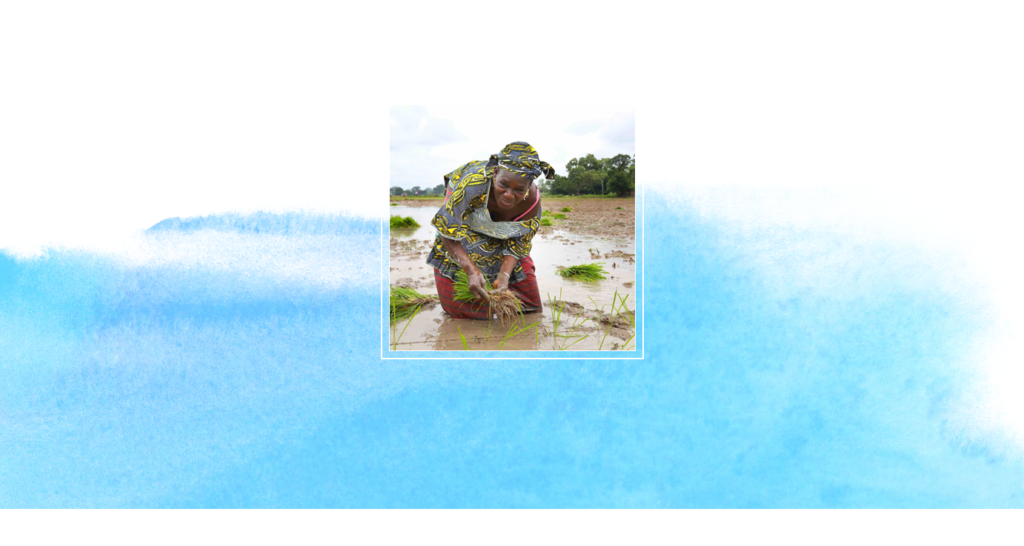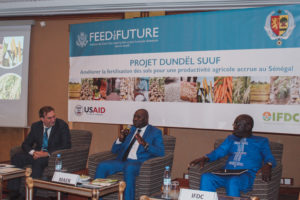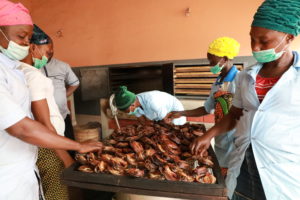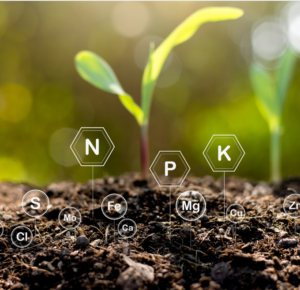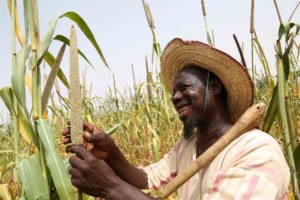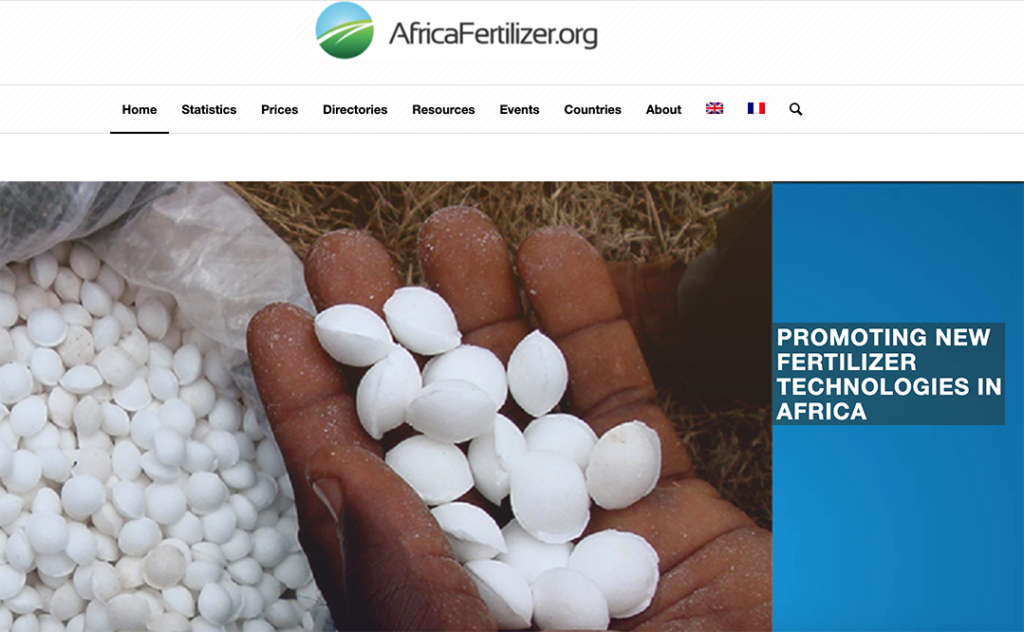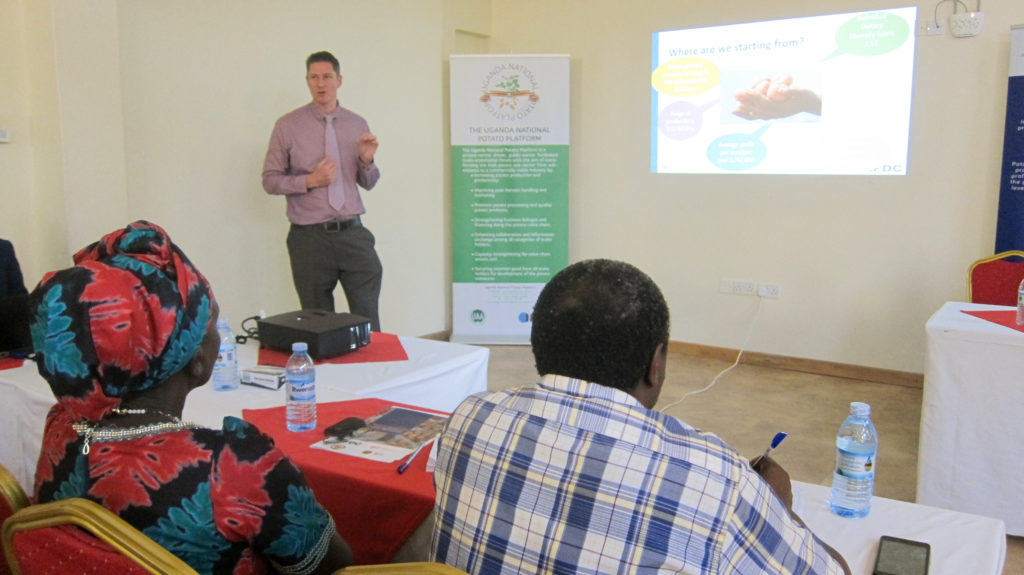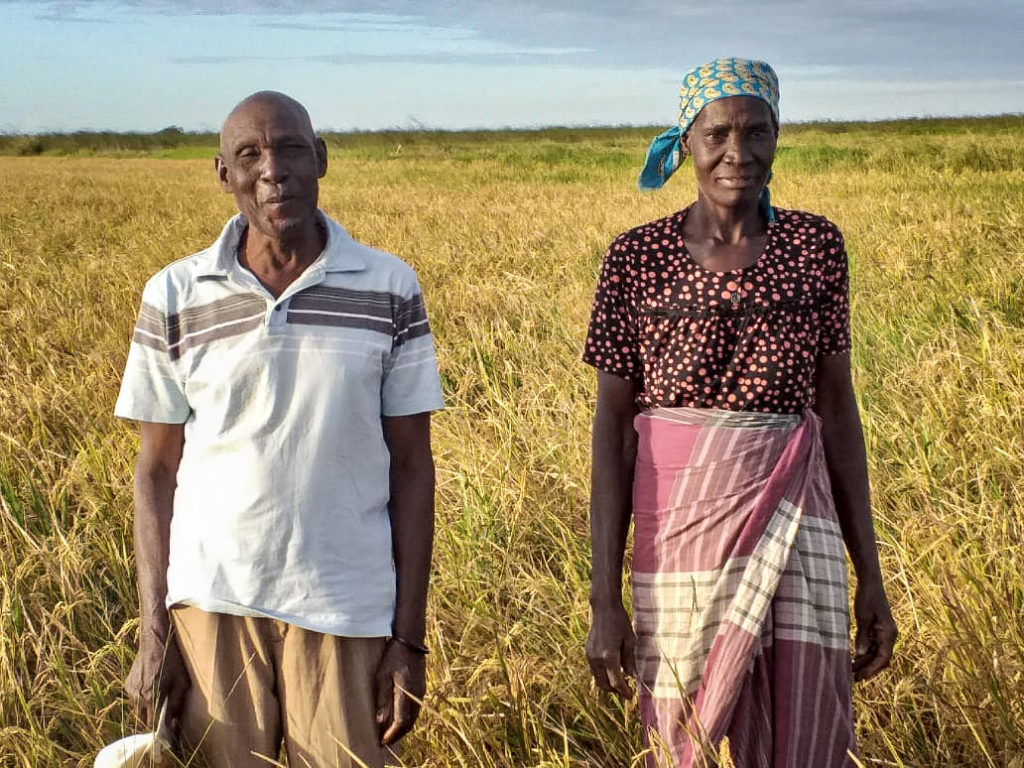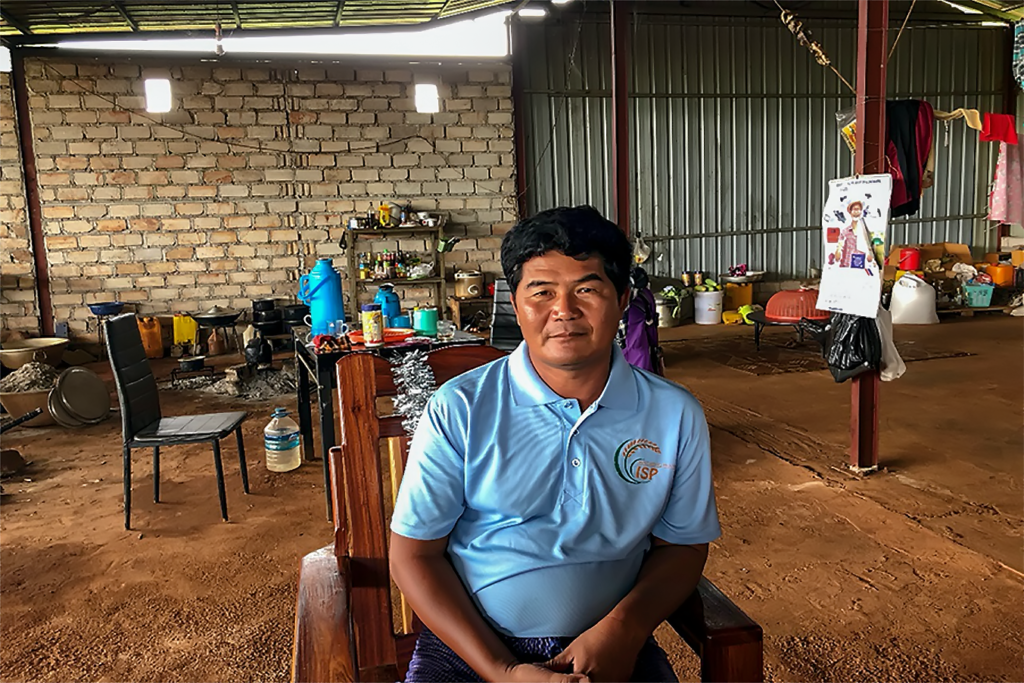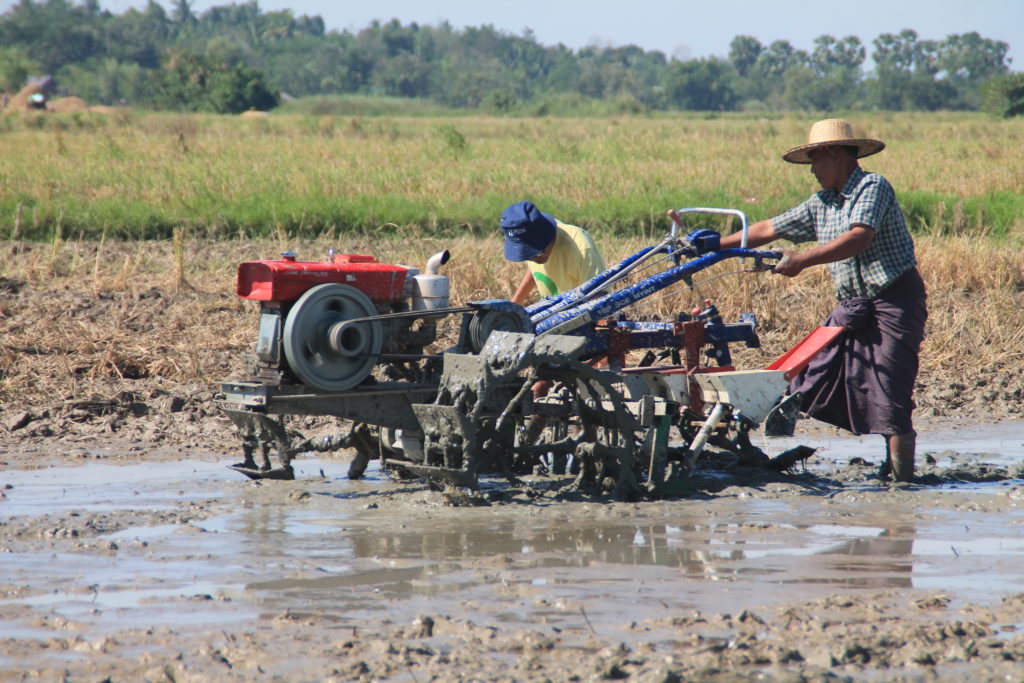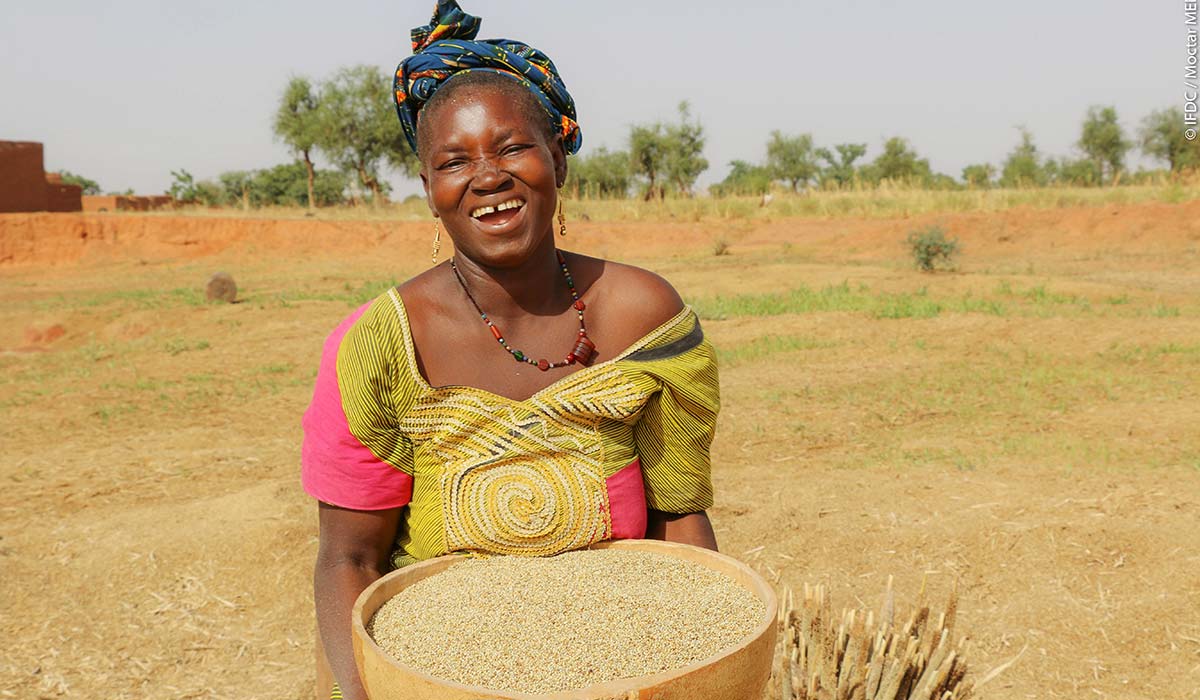Contents
Letter from the Leadership | Reach for Results | Our Strategy to Feed the World | IFDC Research | North & West Africa | East & Southern Africa | Asia | IFDC International Training | 2019 Publications & Presentations | 2019 Financial Statement
Download PDF
Letter from the Leadership
Navigating Uncharted Waters, Reflecting on Successes
As we navigate our way through the uncharted waters of 2020, we reflect on our work and successes accomplished in 2019.
Last year, Albin Hubscher took the lead as President and CEO of IFDC. Almost immediately, management and select staff, encouraged by the Board, set about crafting a new strategy and way forward for the organization. IFDC’s new streamlined strategy, completed early in 2020, focuses on developing better technologies, increasing on-farm productivity, strengthening market systems, and facilitating an enabling environment for smart agricultural policy and knowledge sharing. The strategy is discussed in our feature.
Our staff continued their excellent work and, by the end of last year, converted more than 100,000 hectares of smallholder farmland to improved agricultural technologies. More than 200,000 farmers utilized these technologies on their land, and more than 250,000 farmers participated in training and capacity building, with women representing 31%. In addition, we established more than 13,000 demonstration plots, formed and facilitated an astounding 523 public-private partnerships, and led over 4,000 outreach activities.
We were also able to sign a new Master Agreement with the OCP Group in Morocco. As part of this public-private partnership, IFDC and OCP will work together with the Mohammed VI Polytechnic University (UM6P) on various research, implementation, and education projects with the ultimate goal of developing and increasing farmer access to new fertilizer products and boosting their incomes.
Thanks to the combined efforts of the IFDC team, we were able to finalize the process with the Dutch Ministry of Foreign Affairs that led to the signing of a Coordinated Relationship Management agreement facilitating partnership with IFDC and providing for simplified review and reporting processes. This agreement will continue to strengthen our relationship as we work with the Dutch Government and in-country embassies throughout Africa.
Our great work in sub-Saharan Africa and South Asia is built upon a strong foundation within the organization. In 2019, we strengthened internal processes by transitioning to an accounting software powered by NetSuite, which allows for an improved procurement process and faster delivery of financial results. In addition, we fully implemented the EthicsPoint platform, which provides employees a safe whistleblower mechanism to anonymously report misconduct if that should occur.
Unfortunately, we mourned the passing of Dr. David Glenn. David was the Chief of Party of our Dry Zone and Uplands Agro-Input and Farm Services project, funded by the Livelihoods and Food Security Fund (LIFT) in Myanmar. His passing was truly a tragedy and a great loss for our team.
We express our sincere gratitude to all donors and partners that have supported IFDC during the past year. 2019 was a successful year for IFDC, from both a project implementation and a financial perspective. However, we face many new challenges in 2020. It will take the best effort and ingenuity of the IFDC Board, management, and staff to negotiate this unprecedented time and to ensure that food security of the most vulnerable of our society is not compromised any further. We are optimistic that we will successfully meet these challenges with our passion, creativity, and determination.
Reach for Results
Enacting a mission. Achieving a vision.
OUR REACH 2019
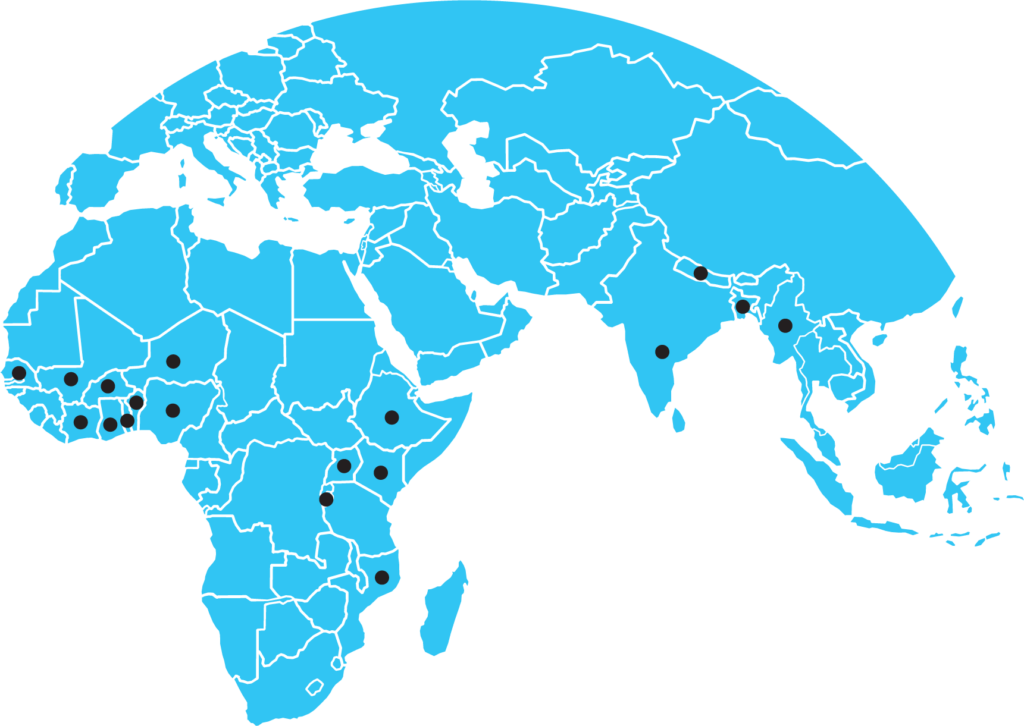
BANGLADESH | BENIN | BURKINA FASO | BURUNDI | CÔTE D’IVOIRE | ETHIOPIA | GHANA | INDIA | KENYA | MALI | MOZAMBIQUE | MYANMAR | NEPAL | NIGER | NIGERIA | SENEGAL | TOGO | UGANDA
Vision
Healthier soils and plants for a food-secure and environmentally sustainable world.
Mission
Bring together innovative research, market expertise, and strategic public and private sector partners to identify and scale sustainable solutions for soil and plant nutrition that benefit farmers, entrepreneurs, and the environment.

13,349
DEMONSTRATION PLOTS ESTABLISHED
Management practices and/or technologies tested in farmer fields for dissemination

256,748
FARMERS TRAINED (31% WOMEN)
Direct farmer participants in short-term
capacity building on management practices and/or technologies
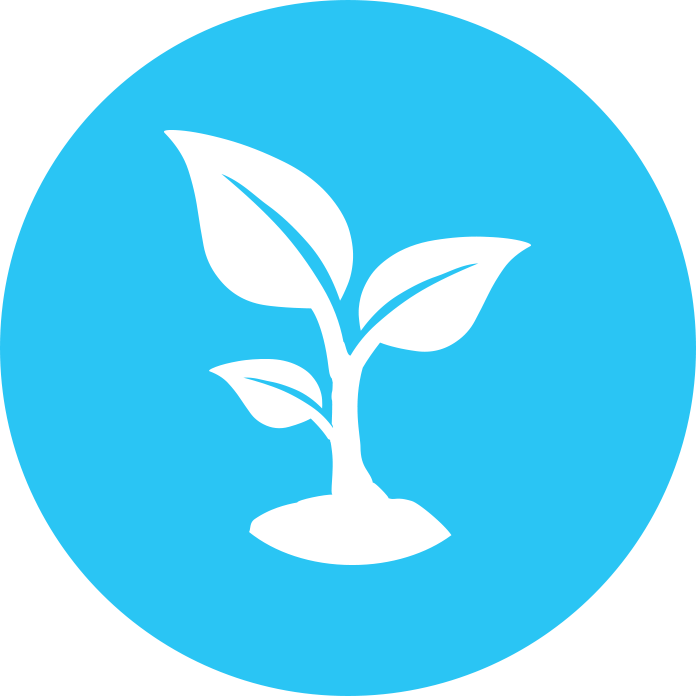
213,654
FARMERS APPLYING GOOD AGRICULTURAL PRACTICES
Farmers who have applied improved farm management practices and/or technologies

102,661
AREA UNDER GOOD AGRICULTURAL PRACTICES
Hectares under improved management practices and/or technologies (managed or cultivated by farmer partners)

523
PUBLIC-PRIVATE PARTNERSHIPS
Agreements between public and private firms/actors and research, academic, civil society, and stakeholder associations

4,207
OUTREACH ACTIVITIES
Dissemination activities: workshops, forums, stakeholder consultations, publications,
and print, radio, and television media
Our Strategy to Feed the World
Develop Better Technologies | Catalyze Farm Productivity | Strengthen Markets | Enable Impact
Mission in Action
IFDC believes fundamental improvements in soil and plant nutrition are required to meet the challenge of sustainably feeding 10 billion people by 2050. Global population growth will drive a substantial increase in food demand, while climate change is already accelerating risks to food production, especially in poorer regions. Major changes in agricultural systems – especially nutrient use efficiency – will be needed to ensure food security and environmental sustainability.
Over the past 70 years, NPK adoption fueled spectacular increases in agricultural productivity in much of the world, but the ecological costs of inefficient fertilizer use have been high. Over half of the estimated 120 million tons of nitrogen fertilizers used each year ends up in waterways. Agriculture, forestry, and land-use change were responsible for a quarter of global annual greenhouse gas emissions during 2007-2016.
In sub-Saharan Africa, deficiencies of zinc, boron, and sulfur have contributed to poor fertilizer profitability, low adoption rates, and a vicious cycle of soil degradation. Soil and environmental degradation results as nutrients are continually extracted through cropping and as agricultural production expands onto new, often marginal, lands. Declining soil fertility limits biomass production and surface cover, leading to poor soil structure and increased runoff and erosion.
To meet these challenges, IFDC has revamped its strategic approach. For more than 40 years, IFDC has led the research and implementation of many novel technologies. As our shared challenges become more complex, we must find innovative ways to look ahead and solve them. Our strategy outlines four strategic objectives that guide us as we strive for a food-secure, environmentally sustainable world.
OUR STRATEGIC SOLUTIONS
Achieving impact at scale requires adapting research and technology to smallholder needs, but it must go further. IFDC experts and their partners work across the discovery-to-consumer continuum to bridge the traditional gaps between research, technology dissemination, and market systems that often undermine efforts to realize and sustain impact at scale. With an emphasis on working with partners and strengthening local capacity, IFDC focuses on integrating project-level research and development efforts across four priority areas.
DEVELOP BETTER TECHNOLOGIES
Develop more nutrient-efficient, environmentally sound fertilizers.
IFDC tests and adapts advanced fertilizers, including stabilizers, inhibitors, and biodegradable polymer and micronutrient coatings. These improvements regulate nutrient release, helping to reduce runoff, leaching, and greenhouse gas emissions.
Improve fertilizer recommendations.
Working with national partners, IFDC validates new technologies that advance the quality and spread of fertilizer recommendations. These include spectral soil and crop analysis, satellite imagery showing spatial variation in yield and water use efficiency, improved soil test kits, and information and communication technologies (ICT).

In our greenhouses, laboratories, and pilot plant – as well as in field sites all over the world – our scientists and engineers work with public and private sector partners on developing new, better soil and plant nutrition technologies. Our Feed the Future Soil Fertility Technology (SFT) Adoption, Policy Reform and Knowledge Management Project aims to bridge the gap between scientific research and effective technology demonstration. From new research on subjects such as activated phosphate rock, to policy reform and consortium-led activities, the SFT project has a research-focused, cross-cutting initiative.
Scale up the production and adoption of new fertilizers.
IFDC uses its Soil-SMaRT framework (Soil testing, Mapping, Recommendations development, and Technology transfer) to map soils at national and regional levels and to evaluate balanced fertilizers through crop trials and modeling. IFDC’s Pilot Plant team works with public and private partners to test the technical and financial feasibility of manufacturing improved fertilizer blends, coatings, and compounds at scale.
Refine and scale Integrated Soil Fertility Management (ISFM).
Fostering a Green Revolution in Africa will require rebuilding degraded soils, but ISFM strategies developed in the 1990s used ex-situ organic materials that were costly and challenging for smallholders. Going forward, IFDC and partners will focus on a combination of integrating organic biomass from the field itself and applying balanced inorganic fertilizers. Key approaches will include production ecology modeling; designing organic/inorganic fertilizers and management strategies that work with the soil microbiome; managing biomass and its impact on soil health and plant nutrition; and developing fertilizers produced with local resources.
CATALYZE FARM PRODUCTIVITY
Conduct on-farm research and demonstrations.
IFDC works with smallholders and other partners to test the impact of key practices, including soil and water conservation techniques, no-till farming, relay cropping, cover crops and organic matter recycling methods, on climate resilience and the environment.
Expand engagement of women and youth.
IFDC is expanding training for these groups and working to improve their access to productive resources and services. Increasing the successful participation of women and youth in new agribusiness partnerships on and off the farm is a key objective.
Use ICT to scale adoption of improved technologies.
Working closely with youth as early adopters and trainers, IFDC is harnessing mobile phones and apps to change how farmers access and use information about markets, weather and pest forecasts, and crop management and business management advice.
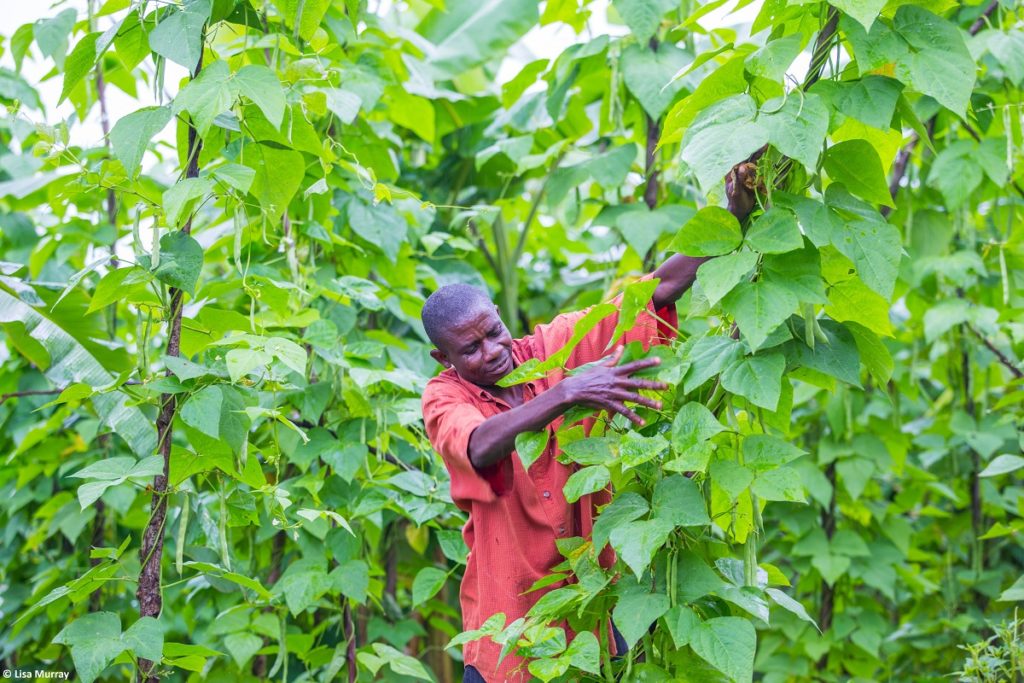
The USAID-funded Fertilizer Deep Placement and Microdosing (FDP MD) project worked with rice, millet, sorghum, and vegetable farmers in Mali to boost productivity using proven fertilizer-based technology. They utilized both on-farm demonstrations and innovative ICT approaches to reach and train farmers.
The Accelerating Vegetable Productivity Improvement (AVPI) project in Bangladesh focused exclusively on catalyzing productivity and empowering women farmers. As a result, more than 40,000 women farmers are applying improved practices on their farms.
STRENGTHEN MARKETS
Develop agribusiness clusters.
IFDC brings together groups of farmers, commodity buyers, agro-input dealers, banks, service providers, and processors, building the trust and long-term relationships that are necessary to expand access to input, finance, and output markets for smallholders. Key priorities include developing agribusiness opportunities, especially for youth and women, and ensuring the supply of quality commodities to buyers and processors.
Identify scaling pathways, partners, and potential risks/opportunities.
Working with local partners, IFDC conducts scalability assessments that estimate financial and economic profitability, analyze the business case for new technologies at smallholder, input dealer, and commodity market levels, and review environmental outcomes.
The Resilient Efficient Agribusiness Chains in Uganda (REACH-Uganda) project, funded by the Embassy of the Kingdom of the Netherlands in Uganda, is utilizing a market systems approach to ensure markets for potato and rice are functioning more efficiently and sustainably for farmers and agribusinesses. In 2019, more than $4.8 million was leveraged for business and infrastructure activities, and more than 36,000 farmers, a majority being women, were trained on “farming as a business,” climate-smart agriculture, and resilience measures.
ENABLE IMPACT
Support global, regional, and national dialogues.
IFDC is working with partners to improve the level and quality of investments in soil fertility and plant health.
Strengthen policies and regulations.
IFDC facilitates the development of fertilizer industry and agro-dealer platforms to address policy and regulatory issues and environmental concerns; improves local capacity to assess market demand and supply, analyze marketing margins, and develop cost buildup studies; provides technical support to assess impacts and inform adjustments to policies and regulations; and strengthens the capacity of national standards authorities and research systems to assess the quality of new and existing fertilizer products.

As Strategic Objective 4 is cross-cutting, many of our projects overlap. Concerning policy development, the Feed the Future Enhancing Growth through Regional Agricultural Input Systems (EnGRAIS) project for West Africa engages and supports national and regional governments to cultivate policies and regulations that work for farmers and agribusinesses. In 2019, the project disseminated the Regional Fertilizer Subsidy Program Guide which will help improve national subsidy programs using a “smart” subsidy approach.
Another highlight of Strategic Objective 4 is training. Training and capacity building are built into all of our programs and projects. As an example, The OCP-funded Fertilizer Research and Responsible Implementation (FERARI) project is training the next generation of agriculture students and researchers to enter the job market. It is also working with several institutions to strengthen their scientific capabilities.
IFDC Research plays a unique intermediary role by transforming innovative fertilizer products and soil fertility management technologies into adaptable and scalable production technologies. We undertake applied research and implementation, involving scientific discovery, development, and testing of advanced fertilizers and related soil fertility management technologies; design of fertilizer manufacturing and quality control processes; market system development; and applied policy and regulatory analysis. The overall goal of IFDC research is to significantly boost the production of higher quality food, using less land and water; improve the climate resilience of farming systems; and reduce adverse environmental impacts associated with agriculture. Our research was made possible by the Feed the Future Soil Fertility Technology (SFT) Adoption, Policy Reform, and Knowledge Management project, as well as partnerships with the private sector.
INNOVATIVE RESEARCH SOLUTIONS THROUGH PARTNERSHIPS
Partnerships are crucial to our applied research. In 2019, our team worked with private sector and university partners on maximizing nutrient use efficiency of nitrogen (N), phosphorus (P), potassium (K), and sulfur (S) fertilizer products; improving soil and plant health through balanced nutrition; and promoting sustainable soil intensification practices, such as conservation agriculture and integrated soil fertility management. Laboratory, greenhouse, and field trials were conducted to quantify the effect of various coating materials (polymer, lignin, peanut shell, corn starch, S, micronutrients, polyhalites, nanomaterials, etc.) and inhibitors (urease and nitrification) on ammonia volatilization loss, N leaching loss, nitrous oxide emissions, yield, crop N uptake, and protein content.
Our research showed that, in addition to directly improving N use efficiency, urea products incorporating S, zinc (Zn), or other micronutrients increased yield, enhanced grain quality, and improved resilience to drought. Field trials conducted in Bangladesh increased maize yield by an average of more than 1 metric ton per hectare (mt/ha) with S application. In trials in Nepal on cauliflower, urea with elemental S increased yield by 5 mt/ha with 50% less N. Nutrient omission trials on maize in Ghana also demonstrated the importance of balanced fertilization and soil amendments.
While promoting multi-nutrient fertilizer sources for balanced plant nutrition, we also paid attention to negative interactions between nutrient elements that may reduce bioavailability. Laboratory, greenhouse, and field trials were conducted to evaluate different sources of Zn with urea and monoammonium phosphate (MAP) using combinations of coatings, including polymer and seed-core Zn.
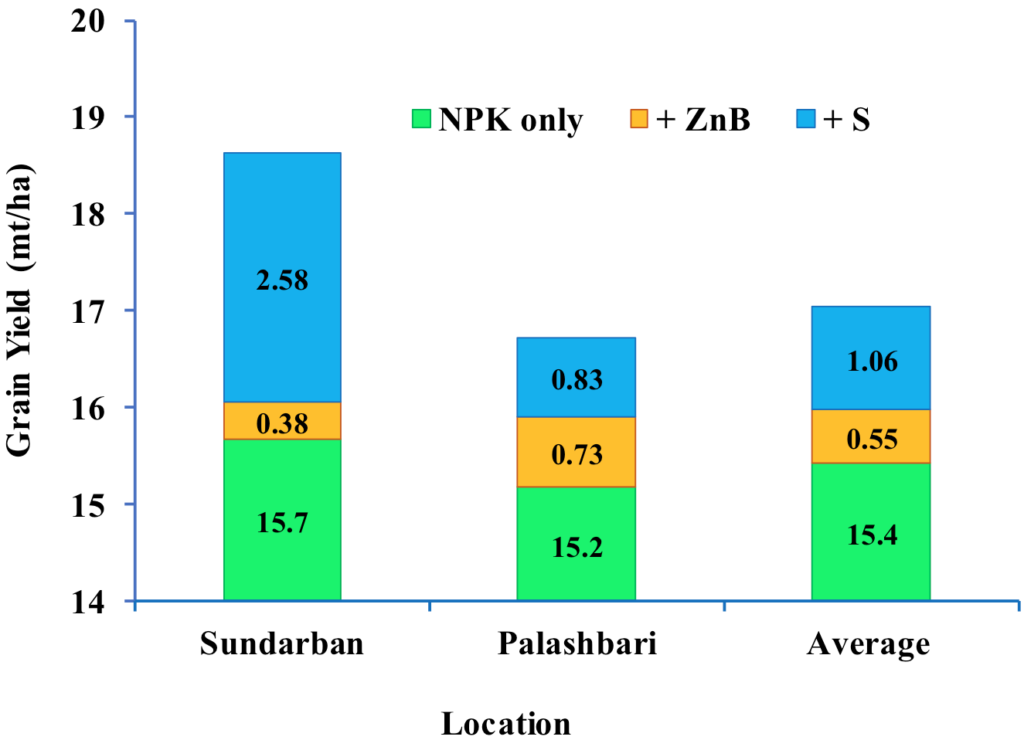
We have worked with private sector partners to develop and evaluate new fertilizer products with enhanced nutrient use efficiency, low cost, local resources, recycled raw material, and decentralized production. For example, IFDC research on P relates to improving phosphate availability to plants from low-medium reactive phosphate rocks (PRs) by developing phosphatic fertilizers that have 25% or less P supplied by water-soluble P (WSP) sources. This process would utilize PR deposits that are not large enough or economically feasible for conventional P fertilizers (Box 1).
IFDC partnered with an Alabama-based startup to explore opportunities to increase the quantity and quality of organic fertilizers available to improve soil fertility and soil health. Use of organic fertilizers and amendments is an essential component of integrated soil fertility management. The effective recycling of nutrients using black soldier fly larvae to enhance shelf life and use efficiency of poultry manure can facilitate nutrient flows away from hotspots to fields that are nutrient deficient. This activity also involves a partnership with Auburn University to evaluate soil health parameters.
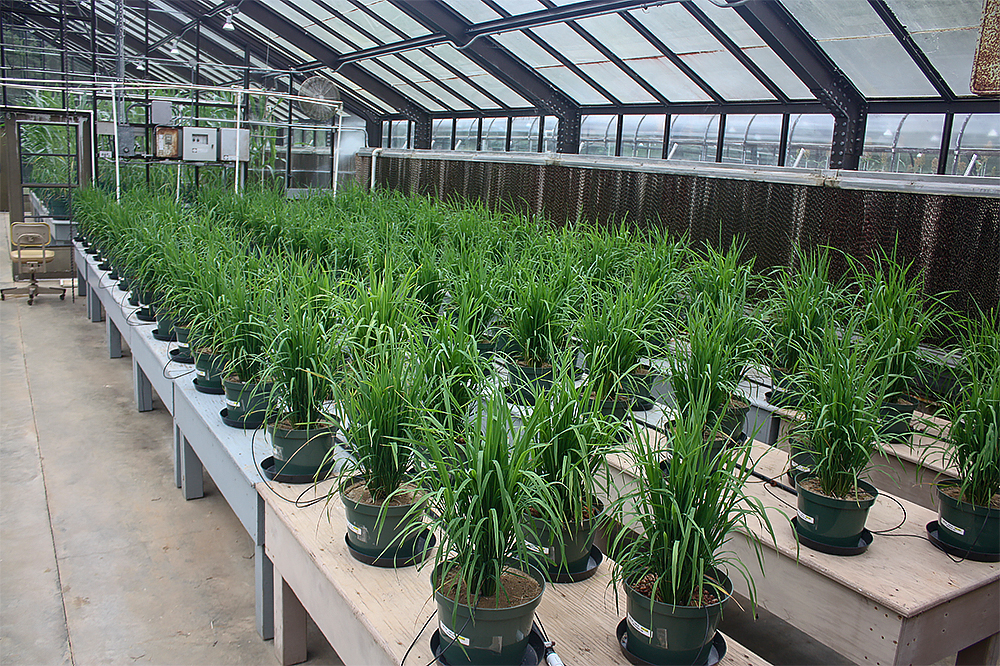
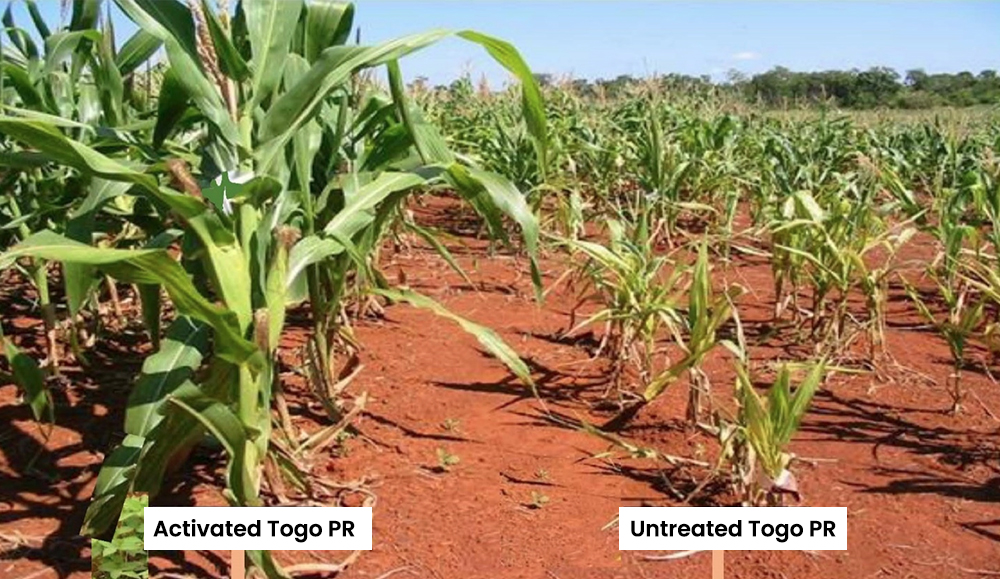
Activated Phosphate Rock (PR): Making Phosphorus Fertilizers Affordable
Today, PR, a finite resource, provides virtually all the P fertilizer used. Globally, 72-75% of PR mined is used to produce phosphoric acid, an essential precursor to high analysis WSP fertilizer. Although many countries in sub-Saharan Africa are endowed with PR deposits, most of these deposits are too small for commercial mining for P fertilizers. Also, the PRs from these deposits are of low reactivity, making the direct application of PR ineffective for most crops and soils. When plant-available WSP is applied, it is rapidly converted to different soil P pools, with less than 10-20% of applied P taken up during the intended crop cycle. This low efficiency leads to substantial economic and environmental costs; therefore, WSP application is an unsustainable practice in low input agricultural systems with marginal profit potential. Our research, supported by public-private partnership, focused on improving the efficiency of PR for direct application with minimal acidification or chemical alteration to provide only the necessary amount of WSP and reducing environmental and economic damage.
Our process of “activating” PR includes thorough mixing of ground PR (75% or more P supply) and ground monoammonium phosphate (MAP) (25% or less P supply), followed by compaction and/or granulation. MAP provides immediately available P as a “starter-effect” on root growth and it also acidifies the soil around the fertilizer microsite, thus facilitating dissolution of PR. This process is energy efficient and environmentally desirable compared to the current WSP fertilizer production technology. Activated PR also promotes release of calcium (Ca) from PR, whereas MAP does not contain any Ca. This essential plant nutrient is deficient in many weathered soils.
Activated PR has been tested under greenhouse conditions on a wide range of soils with pH ranging from 5 to 8 and with rice, soybean, sorghum, and wheat. The performance of activated PR was 80-100% as effective as the treatment with 100% P supplied from MAP. Field trials conducted in Ghana and Kenya have verified greenhouse results. Our research eliminates constraints such as PR reactivity and soil pH and makes PRs more agronomically efficient.
ECONOMICS AND POLICIES FOR CHANGE
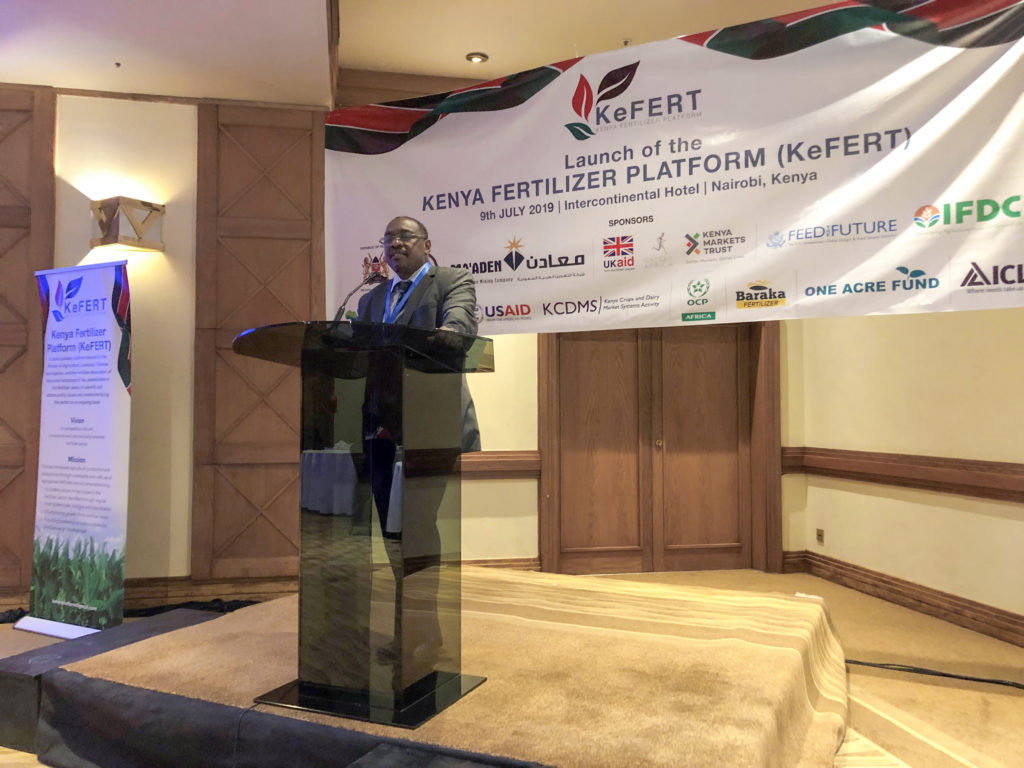
During 2019, IFDC’s economics and policy work focused primarily on research and advocacy efforts through focused surveys and consultations among stakeholders. The Kenya Fertilizer Platform (KeFERT) initiated in 2018 was formally launched in July 2019. KeFERT facilitated meetings with fertilizer sector stakeholders in partnership with the Kenya Bureau of Standards and the Ministry of Agriculture to set fertilizer standards and streamline fertilizer subsidies in Kenya. At the request of the Principal Secretary of the Ministry of Agriculture, IFDC conducted a detailed technical assessment of the subsidy program and submitted a modified design using electronic vouchers, known as the Kenya National E-Incentive Inputs Program. Since then, the Ministry has held several consultations to generate consensus on shifting to a countrywide e-voucher system during the 2020 cropping season.
In 2019, an empirical estimation of the economic and environmental benefits of using urea deep placement (UDP) technology was conducted in Bangladesh using the life cycle analysis (LCA) approach. Results indicated UDP reduced greenhouse gas emissions by 50% while minimizing N in runoff compared to broadcast urea application. Economic benefits associated with UDP include a 33% savings in the amount of N fertilizer applied, reduced weeding cost, and increased paddy yield by about 500 kg/ha compared to broadcast application. The analysis further indicated that Bangladeshi farmers using UDP technology may have opportunities to gain carbon credits
SOILS CONSORTIUM LAUNCHES

IFDC, in partnership with the Feed the Future Innovation Lab for Collaborative Research on Sustainable Intensification (SIIL) at Kansas State University that is financed by USAID, initiated a collaborative research consortium focusing on Sustainable Opportunities for Improving Livelihoods with Soils (SOILS). The SOILS Consortium brings together national and international partners to develop and implement soil health and fertility-enhancing innovations. Academic and research partners include Michigan State University, University of Colorado, Auburn University, and the U.S. Department of Agriculture’s Agricultural Research Service. The primary goal of the SOILS Consortium is to improve soil fertility in the most vulnerable regions of sub-Saharan Africa. Through innovative research, coordination, capacity building, networking, data sharing, and communication approaches, the SOILS Consortium will provide sustainable solutions to build resilient households with access to nutritious food.
Following a soft launch during the Soil Science Society of America meeting in San Diego in January 2019, the formal launch of the SOILS Consortium was held in Washington, D.C., in March 2019 to showcase USAID and IFDC’s leadership and solidify activities for the first year. The consortium further invited detailed concepts to enhancing soil fertility research, leveraging ongoing work by partners in Niger and Ethiopia.
The SOILS Consortium conducted a series of summits in Niger and Ethiopia during May and November 2019, bringing together research stakeholders leading soil health activities across major production zones in each country, and co-developed unified regional strategies to improve soil health and soil fertility recommendation in alignment with national and regional priorities. A Common SOILS Agenda was drafted, outlining ongoing activities that meet the recommendations of the summits and proposing a new set of activities to address gaps in soil fertility research.
FERTILIZER ENGINEERING, PRODUCTION, AND RESEARCH
IFDC’s fertilizer engineering and pilot plant services help fertilizer producers solve production problems.
In 2019, we:
- Conducted research on various binders for use in granulation to produce products for the fertilizer industry.
- Worked on incorporation of new raw materials into existing fertilizer processes.
- Conducted physical properties testing on new fertilizer products introduced into the market.
Research on fertilizer formulations, properties, technical feasibility, and overall market feasibility of products is made possible through an interdisciplinary team of engineers, technicians, scientists, and economists.
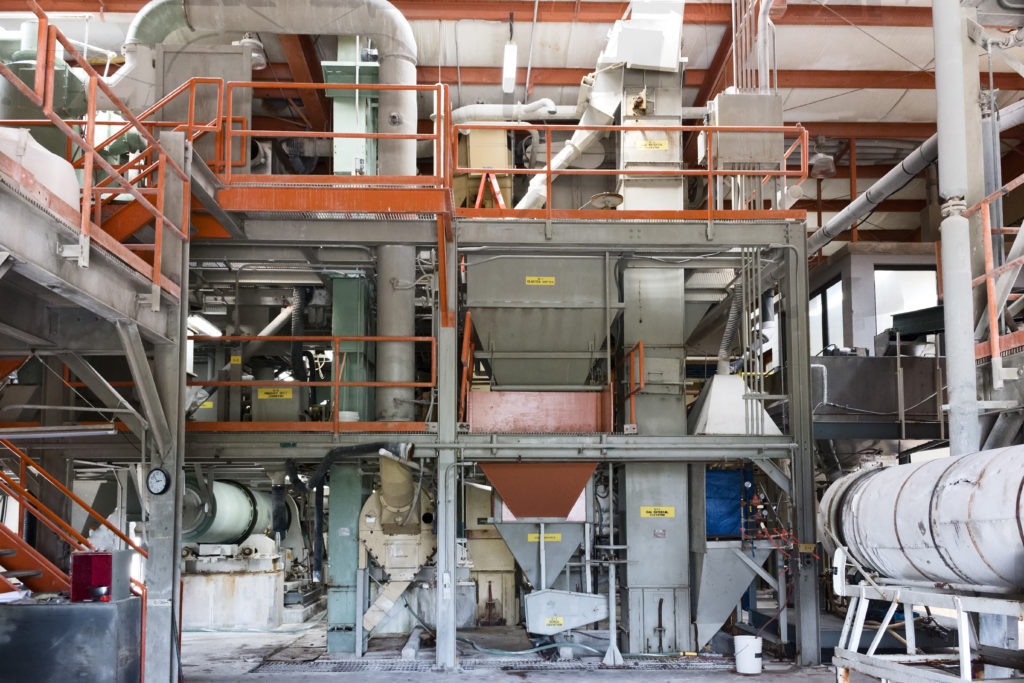
Pilot Plants and Laboratories
- Fully continuous fertilizer granulation plants.
- Phosphoric acid plants.
- Laboratories for chemical and physical characterizations of fertilizer materials.
- Laboratories for fertilizer compaction/granulation, briquetting, pelletizing, and tableting.
North and West Africa
BENIN | BURKINA FASO | CÔTE D’IVOIRE | GHANA | MALI | NIGER | NIGERIA | SENEGAL | TOGO

IFDC seeks market-driven solutions to structural problems in the agriculture sector in North and West Africa. Core activities include capacity building of all agricultural value chain actors and facilitation of an enabling policy environment. We support agricultural policy reform processes and provide policy advice aimed at supporting entrepreneurship.
Our work in the region supports the development and implementation of regional agricultural policies within the Economic Community of West African States (ECOWAS) and the West African Economic and Monetary Union (UEMOA). We also work with national public research and regulatory institutions to improve infrastructure and ensure that public services reach the smallholder farmers who need them the most.
IFDC aims to strengthen smallholders’ resilience in rural communities in West Africa. The use of balanced fertilizer products and application methods, such as fertilizer deep placement and microdosing technologies, is improving nutrient use efficiency and increasing yields and income. In addition, we help farmers identify and access profitable markets, usually through public-private partnerships, agribusiness clusters, and farmer-based organizations. Our projects also improve technology transfer, promote integrated soil fertility management, and enable sustainable farming systems.
Project Highlights
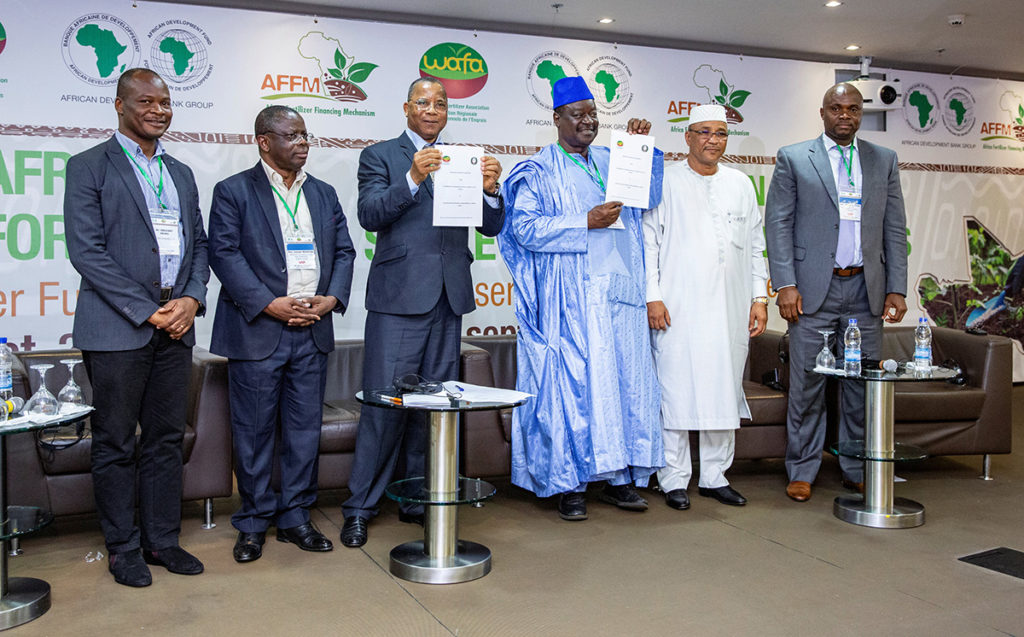
The West African Fertilizer Association (WAFA)
The West African Fertilizer Association (WAFA), registered in 2016 as a regional private sector association, has been looking for partnerships to support its main objective of building a competitive and reliable market that guarantees sustainable access to quality and affordable fertilizers by West African farmers. In just under four years of existence, WAFA represents 85% of the fertilizer trade in the region.
If WAFA succeeds, the fertilizer sector in West Africa will be primed for success. Recognizing this opportunity, the EnGRAIS project has been supporting WAFA to become a strong and efficient association that can organize the private sector and promote quality, accessible, and affordable fertilizers across the region.
With support from EnGRAIS, WAFA co-organizes the annual West Africa Fertilizer Forum (WAFF) with Argus Media. WAFF is a regional platform created to strengthen the West African fertilizer market and sector, encourage private sector investment, and promote the use of quality fertilizers among farmers. This forum gives WAFA the opportunity for key business discussions and to develop these relationships across the region and generate significant financial resources for the association. WAFA has already hosted three successful annual WAFFs.
“We started with nothing, but today WAFF has become a powerful platform in West Africa for fertilizer stakeholders and brings together over 200 key public and private sector players annually to discuss issues related to fertilizers,” says Moussa Diabaté, President of WAFA. “Many people are eager to participate in this forum now. Everything to do with fertilizer in West Africa passes through this forum.”
WAFA now has credibility that is attracting the attention of major financial institutions, including the African Development Bank and its Africa Fertilizer Financing Mechanism. In the fall of 2019, the Bank worked with WAFA to host the first-ever West Africa Fertilizer Financing Forum, which focused on solutions to the region’s fertilizer sector financing needs.
Logistics and quality issues are among the top priorities for WAFA. The association participated in cost buildup studies conducted by EnGRAIS along four main fertilizer trade corridors in West Africa. The study results provide critical information for suppliers’ logistical planning to make fertilizers available, accessible, and affordable to end users. WAFA is a strong promoter of the ECOWAS regulations on fertilizer quality, and EnGRAIS contributed to development of the regulations, in collaboration with the industry, policymakers, and users.
By signing a new Memorandum of Understanding (MoU) with ECOWAS, WAFA has become a key ECOWAS partner to improve and increase the flow of quality of adapted fertilizers in the West Africa region. The MoU strengthens WAFA’s position as the official voice for all fertilizer sector players in the region. In this position, WAFA is better placed to access greater opportunities for its members to help farmers access appropriate and balanced fertilizers.
East and Southern Africa
Burundi | Ethiopia | Kenya | Mozambique | Uganda
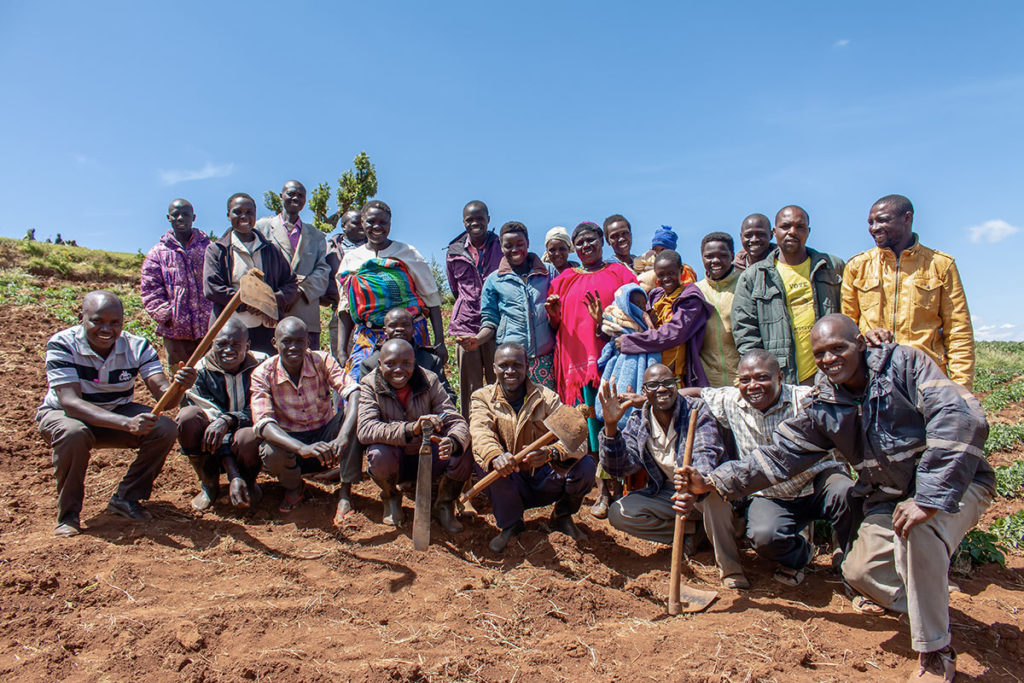
IFDC projects in East and Southern Africa bolster local agribusinesses. We work to transform livelihoods for smallholder farmers and their communities by utilizing improved agricultural technologies, creating inclusive income opportunities, and facilitating market access. On the input side, we link farmers with small and medium enterprises that that supply quality fertilizers and seeds. On the output side, we connect them with companies that buy their crops. Farmers involved in these agribusiness partnerships collectively sell millions of dollars of crops to buyers. IFDC also works with these agribusinesses and related service providers to increase their capacity to source from smallholder farmers and supply products to domestic and international buyers, including low-income consumers.
All projects include training and mentoring components. We strengthen farmers’ knowledge of good agricultural practices, integrated soil fertility management technologies, and other crop management practices that help farmers build resilience to climate shocks. IFDC emphasizes balanced fertilization and crop nutrition, particularly the use of secondary and micronutrients. To ensure farmers in the region have access to fertilizers that meet specific soil and crop needs, IFDC employs its SMaRT framework (Soil testing, Mapping, Recommendations development, and Technology transfer). Regional activities also focus on association building, policy analysis and reform, and market information access.
By collaborating with agribusinesses, service providers, national and regional partner organizations, research institutions, governments, and donors, we support the development of competitive and sustainable agricultural value chains and create an enabling environment for agricultural intensification and private sector development.
Project Highlights
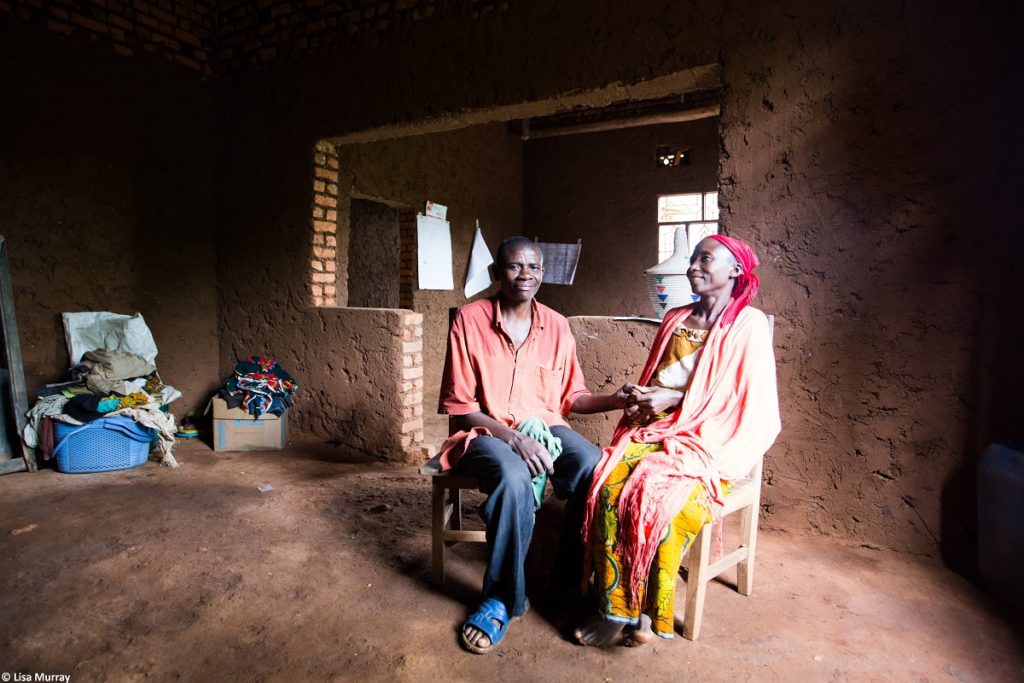
Integrated Farm Planning Succeeds In Burundi
The recently completed Projet d’Appui à la Productivité Agricole au Burundi (PAPAB) project, funded by the Embassy of the Kingdom of the Netherlands in Burundi, sustainably increased food production in Burundi by promoting market-oriented, climate-resilient, and sustainable agricultural techniques, supported by targeted fertilizer subsidies. A large part of the program was the integrated farm planning (PIP) approach that enabled households to create a long-term vision for their futures and inspired them to take charge in changing their realities. Below are several farmers and farming families that benefited from this approach.
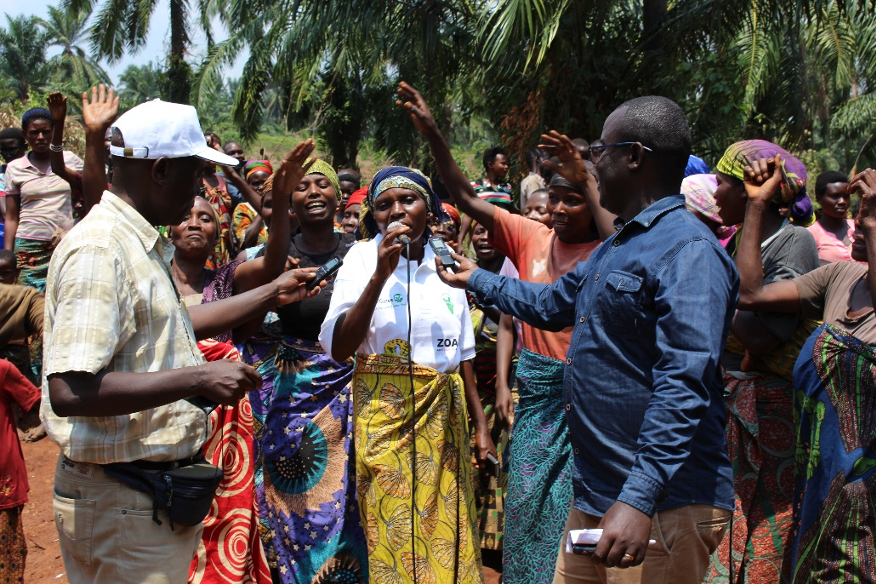 Dieudonné Ntahimpera, Kirengane Hill Chief, Rugazi Commune, Bubanza Province
Dieudonné Ntahimpera, Kirengane Hill Chief, Rugazi Commune, Bubanza Province
“In terms of our hill vision, we work together to analyze our strengths and weaknesses, establish an overview of our hill, and decide what we want to do for the development of our hill. We envisioned the road layout, a playground, a secondary school, a community cooperative, electricity in our houses, and the locations of irrigation canals. In collaboration with the community, we have already built the cooperative and the irrigation canals.”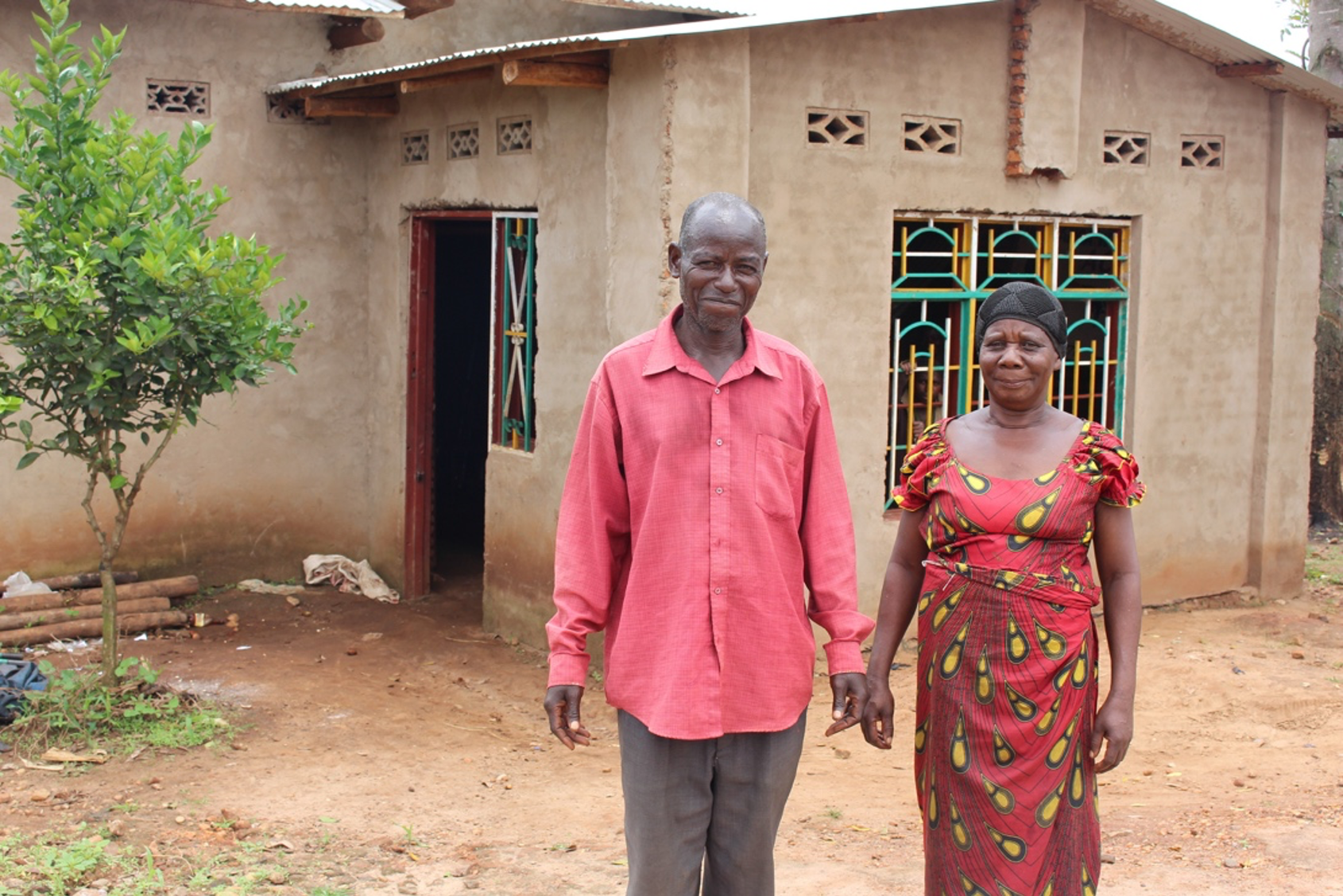
Angeline Nibizi and Alphonse Nizeyimana, Husband and Wife Innovative Farmers
Angeline: “Since we put PIP Mboniyongana (Kirundi for “I know where I go!”) into practice in our household, there have been exceptional changes! Although we already knew how to farm and the old way of doing it, we learned that, first, we need to do some planning within the household. The communication climate between me, my husband, and our children has improved. We make more money, we have more food, and our agricultural production has been good. With our extra money, we improved our living conditions by building a brick house.”
Alphonse: “In truth when we started to be trained and put PIP into practice, I personally thought it was a joke! I thought it didn’t matter, but I was invited to these training sessions as the husband of Angeline, who had benefited from the training before me. The idea was that I would change my mindset and give up old habits. At the time, I thought I was the sole decision-maker for the family. Now, with [the PIP] approach, our living conditions have improved considerably. Before, we lived in a hut, but today we live in a house made of durable materials. We even have indoor plumbing; can you imagine? All of this is thanks to the change in mentality because of PIP.”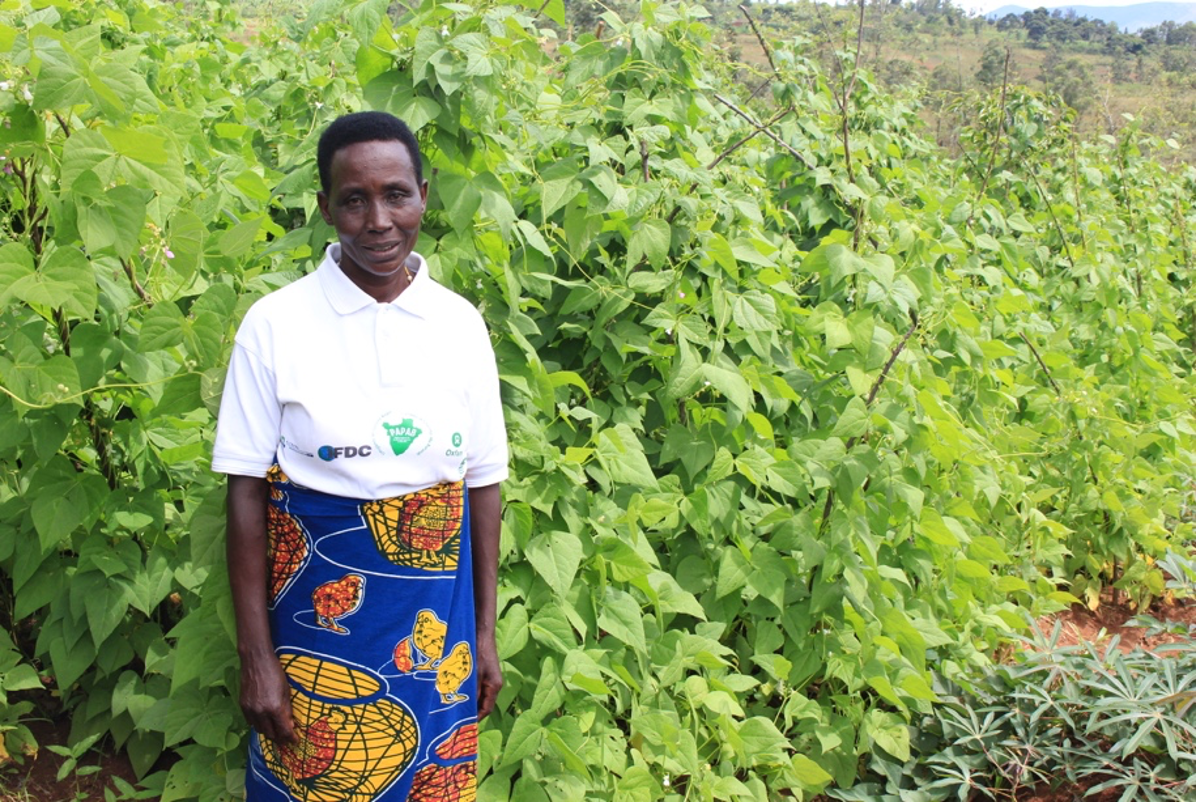
Charlotte Bucumi, Lead Bean Farmer, Kizingoma Hill, Makamba Commune and Province
“After receiving training on agricultural techniques as part of PIP, we changed the way we do things in our fields. We have opted for planting in rows and using quality seeds. For bean farming, we have learned weeding, staking, conservation techniques, and the right way to regularly monitor our fields. Today, I can say without hesitation that we have had a good harvest, giving us something to eat and a good income. With the surplus, we had a gain of 350,000 Burundian francs (about U.S. $185). Now, we are training our neighboring farmers, because they have seen our model fields, all thanks to the training received under PAPAB on its PIP approach.”
A new four-year project in Burundi, the Soil Fertility Stewardship Project (PAGRIS), will carry on the successes of PAPAB. By scaling the PIP approach, the project aims to reach 100,000 family farms and establish ecologically sustainable management on 14,000 hectares of land.
Asia
Bangladesh | Myanmar | Nepal
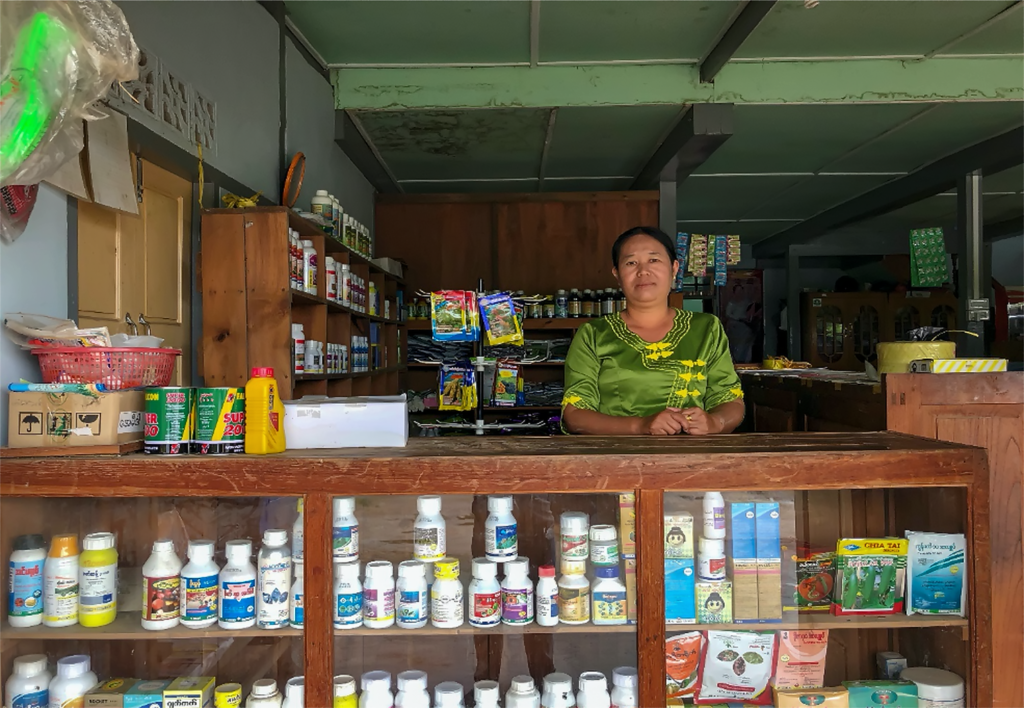
IFDC in Asia serves one of the most diverse areas of the world. Our work seeks innovative ways to develop sustainable agricultural production systems by adopting a holistic approach throughout the entire value chain involving firms, traders, and farmers. This includes developing and testing efficient nutrient technologies and agronomic practices at the farm level, strengthening agri-entrepreneurship, and influencing policy reforms through evidence-based economic analysis. Improving fertilizer efficiency is a major focus of IFDC research in Asia. Climate-smart agricultural technologies, like fertilizer deep placement (FDP), are helping farmers earn more income and mitigate agriculture’s impact on the environment. We are also building the capacity of national scientists in measuring greenhouse gas (GHG) emissions from improved technologies compared with traditional practices.
In addition, IFDC’s work in the region promotes agribusiness models that engage women and youth. In 2019, we completed a project in Bangladesh that empowered women farmers in Bangladesh to improve horticulture production; as a result, over 35,000 female farmers are using improved technologies and management practices.
In 2020, IFDC plans to expand this work into India to diffuse improved agricultural technologies to peri-urban farmers through good agricultural practices (GAPs), capacity building, micro-enterprise development, and linking farmers to markets.
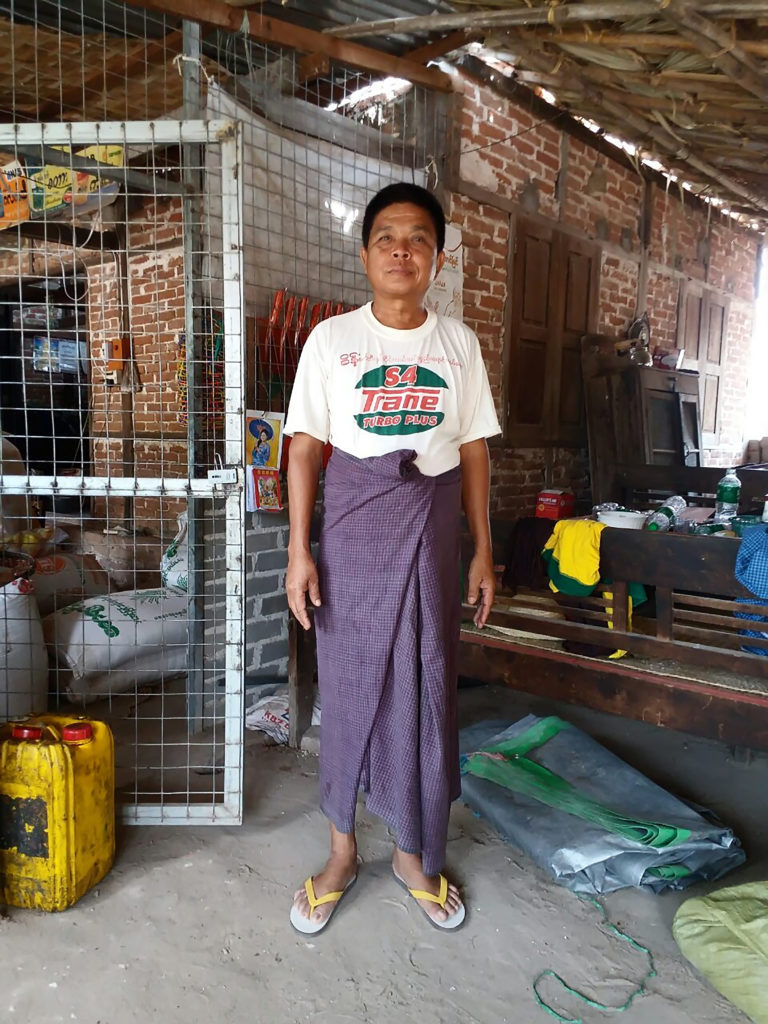
Sustainable Improvement from Simple Techniques
The Dry Zone Agro-Input and Farm Services (DZ) project, funded by the Livelihoods and Food Security Fund (LIFT) and operating in Myanmar from 2015 to 2019, uniquely built the capacity of the agriculture sector. By equipping both local input and service providers (ISPs) and Department of Agriculture (DOA) agents with agricultural knowledge, farmers receive agricultural advice from both sources, who work together to transfer good agricultural practices (GAPs) to their customers and beneficiaries. This approach created trust between farmers and ISPs, resulting in increased income for both. Additionally, this reduced the load on DOA agents, who are each responsible for 585 farmers on average.
U Myint Aung is one farmer who has benefited from the DZ approach. Because his ISP received training from IFDC, Myint Aung was plugged into farmer training sessions, a demonstration plot on plant spacing and high-yielding groundnut varieties, and other field day activities.
The biggest changes Myint Aung has made include climate-smart approaches to planting and harvesting. He practices low-till planting to reduce erosion on his farm, and on his plot of mung bean, he composts crop residue to reapply the nutrients into the soil.
His ISP, U Nyi Nyi Naing, collaborated with the DOA, local farmers, and IFDC to organize farmer trainings, establish demonstration plots, and run field day events. Before becoming involved in the DZ project, he had no experience in organizing these types of activities. Now, he serves 225 more farmer customers than before and passes on new knowledge on how to use and manage fertilizers, seeds, crop protection products, and other crop inputs.
When he suggested a pH measurement, Myint Aung took him up on the offer, along with 25 farmers from six other villages. As he visited each farm, Nyi Nyi Naing provided advice on balancing soil pH. Myint Aung learned from him how to balance his soil pH using gypsum. Additionally, Nyi Nyi Naing demonstrated that only using urea limits soil and plant health and nutrition, thus limiting production and profits. Myint Aung now uses balanced fertilizer that includes micronutrients.
Nyi Nyi Naing and Myint Aung have built a good relationship in which the farmer can purchase inputs, farm tools, and services on cash or credit, and the input provider has a reliable, trusted customer.
Altogether, Myint Aung’s entire farming operation has improved. Through better planting and preparation practices, balanced fertilizer application, and appropriate pH management, his farm’s soil fertility is improving, and its soil pH is becoming more balanced. Thus, he can reduce fertilizer use and climate impacts.
But Myint Aung’s operation is not entirely altruistic. Through these new practices, along with other GAPs, he has been able to increase production. His peanut yield, for example, has doubled from 20-30 baskets per acre to 40-60 baskets per acre.
The intertwined approach of ISP, farmer, and DOA capacity building yielded a win-win-win situation, helping farmers and ISPs across Myanmar improve their livelihoods and achieve their goals, which will continue long after IFDC’s activity in the country.
International Training
Learn. Network. Grow.
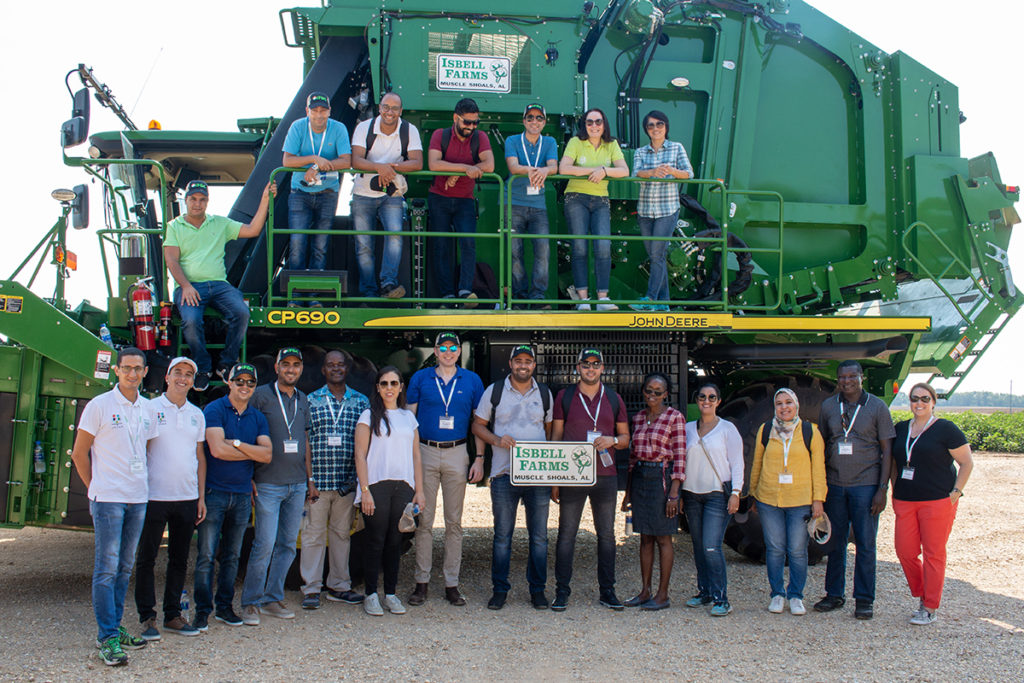
IFDC’s international training, workshop, and study tour programs are designed for professionals in private, public, cooperative, and non-governmental organizations. Each program is conducted by a multidisciplinary team of experts from IFDC’s international staff and partner organizations and companies.
In 2019, IFDC hosted three international training programs in Ghana, Germany, and the United States. Nearly 200 professionals from more than 20 countries brought many disciplines and career levels to the table. They found the international workshops to be an excellent opportunity for networking, exchanging ideas, and learning with and from each other.
“Networking is the hallmark of our international trainings,” says Rob Groot, Director of Business Development and Strategic Partnerships. “In 2019, representatives from both the public and private sectors, composed of CEOs, engineers, managers, and more, from development partners, fertilizer and agriculture companies, governments, and donors participated in our programs. Collaborative learning is our key: it fuels individual capacity building through connecting people who would not normally be working in the same sphere.”

2019 Training Events
Accra, Ghana
May 27-31, 2019
Delivering Balanced Crop Nutrition to Small-Scale Farmers
Frankfurt, Germany
June 24-26, 2019
IFDC/IFA Workshop on Production of Slow-, Controlled-Release, and Stabilized Fertilizers
USA
August 19-31, 2019
U.S. Study Tour: Technology Advances in Agricultural Production, Water, and Nutrient Management
According to one attendee at the workshop in Germany, the biggest benefit was the “excellent networking between experts in the industry… [this workshop was] a great event to increase knowledge of [fertilizers].”
As of publication, precautions taken against the COVID-19 pandemic have put IFDC’s international workshop activities on hold. Stay tuned to IFDC.org and our social media outlets to learn about upcoming events.
Publications
- Adisa, I.O., V.L.R. Pullagurala, J.R. Peralta-Videa, C.O. Dimkpa, W.H. Elmer, J.L. Gardea-Torresdey, and J.C. White. 2019. “Recent Advances in Nano-Enabled Fertilizers and Pesticides: A Critical Review of Mechanisms of Action,” Environmental Science: Nano, 6:2002-2030.
https://pubs.rsc.org/en/content/articlelanding/2019/en/c9en00265k#!divAbstract - Adu-Gyamfi, R., S. Agyin-Birikorang, I. Tindjina, S.M. Ahmed, A.D. Twumasi, V.K Avornyo, and U. Singh. 2019. “One-Time Fertilizer Briquettes Application for Maize Production in Savanna Agroecologies of Ghana,” Agronomy Journal, 111(6):3339-3350. https://doi.org/10.2134/agronj2019.04.0292
- Adu-Gyamfi, R., S. Agyin-Birikorang, I. Tindjina, Y. Manu, and U. Singh. 2019. “Minimizing Nutrient Leaching from Maize Production Systems in Northern Ghana with One-Time Application of Multi-Nutrient Fertilizer Briquettes,” Science of the Total Environment, 694.
https://doi.org/10.1016/j.scitotenv.2019.133667 - Agyin-Birikorang, S., I. Tindjina, C. Boubakary, W. Dogbe, and U. Singh. 2019. “Resilient Rice Fertilization Strategy for Submergence-Prone Savanna Agro-Ecological Zones of Northern Ghana,” Journal of Plant Nutrition, 43:7, 965-986. https://doi.org/10.1080/01904167.2019.1702209
- Agyin-Birikorang, S., I. Tindjina, R. Adu-Gyamfi, H.W. Dauda, A.-R.A. Fuseini, and U. Singh. 2019. “Agronomic Effectiveness of Urea Deep Placement Technology for Upland Maize Production,” Nutrient Cycling in Agroecosystems, 116:179-193. https://doi.org/10.1007/s10705-019-10039-8
- Azumah, S.B., M.S. Taylor, O. Camara, and N. Boison. 2019. “Empirical Examination of the Constraints and Causes of Crop Seed Losses in Ghana,” Journal of Crop Improvement, 33:2, 279-286.
https://doi.org/10.1080/15427528.2019.1579775 - Ba, Mahamadou Nassirou, Marie Claire Kalihangabo, Joseph Rusike and Oumou Camara. 2019. “Fertilizer Subsidies,” IN Feeding Africa’s Soils: Fertilizers to Support Africa’s Agricultural Transformation, pp. 110-122, Alliance for a Green Revolution in Africa (AGRA). https://africafertilizer.org/wp-content/uploads/2019/11/AGRA-Feeding-Africa%E2%80%99s-Soils-2019.pdf
- Camara, O. M., A. Sy Traore, and B. Diagana. 2019. “Fertilizer Distribution and Consumption in West Africa,” Fertilizer Focus, May/June, 54-56.
- Comer, B.A., P. Fuentes, C.O. Dimkpa, Y-H. Liu, C.A. Fernandez, P. Arora, M. Realff, U. Singh, M.C. Hatzell, and A.J. Medford. 2019. “Prospects and Challenges for Solar Fertilizers,” Joule, 3(7):1578-1605.
https://doi.org/10.1016/j.joule.2019.05.001 - Dimkpa, C.O., U. Singh, P.S. Bindraban, I.O. Adisa, W.H. Elmer, J.L. Gardea-Torresdey, and J.C. White. 2019. “Addition-Omission of Zinc, Copper, and Boron Nano and Bulk Particles Demonstrate Element and Size-Specific Response of Soybean to Micronutrients Exposure. Science of the Total Environment, 665:606-616. https://doi.org/10.1016/j.scitotenv.2019.02.142
- Dimkpa, C.O., U. Singh, P.S. Bindraban, W.H. Elmer, J.L. Gardea-Torresdey, and J.C. White. 2019. “Zinc Oxide Nanoparticles Alleviate Drought-Induced Alterations in Sorghum Performance, Nutrient Acquisition, and Grain Fortification,” Science of the Total Environment 688:926-934.
https://doi.org/10.1016/j.scitotenv.2019.06.392 - Gaihre, Y.K., W.D. Bible, U. Singh, and J. Sanabria. 2019. “Quantifying Nitric Oxide Emissions under Rice-Wheat Cropping Systems,” Environmental Pollution, 250:856-862.
https://doi.org/10.1016/j.envpol.2019.04.121 - Lemo, R., H. Ninsima, D. Lukungu, A. Mafabi, J. Namirembe, R. Masaba, M.D. Kalende, R. Basirima, R. Kemigisha, G. Kimoone, D. Tibanyendera, B. Piloya, H. Bekkers, J. Omunyidde, Zhane, D. Slane, D. Hirst, J. Abdul, L. van Veldhuizen, and B. Wennink. 2019. “Management of Farming Resources: Good Agricultural Practices and Climate Smart Agriculture. Experiences of the IFDC REACH Project on Building Smallholder Farmers’ Resilience in the Rice and Potato Value Chains in Uganda.”
- Lemo, R., H. Ninsima, D. Lukungu, A. Mafabi, J. Namirembe, R. Masaba, M.D. Kalende, R. Basirima, R. Kemigisha, G. Kimoone, D. Tibanyendera, B. Piloya, H. Bekkers, J. Omunyidde, Zhane, D. Slane, D. Hirst, J. Abdul, L. van Veldhuizen, and B. Wennink. 2019. “Increasing Resilience for Smallholder Farmer Households through Improved Access to Finance. Experiences of the IFDC REACH Project on Building Smallholder Farmers’ Resilience in the Rice and Potato Value Chains in Uganda.”
- Lemo, R., H. Ninsima, D. Lukungu, A. Mafabi, J. Namirembe, R. Masaba, M.D. Kalende, R. Basirima, R. Kemigisha, G. Kimoone, D. Tibanyendera, B. Piloya, H. Bekkers, J. Omunyidde, Zhane, D. Slane, D. Hirst, J. Abdul, L. van Veldhuizen, and B. Wennink. 2019. “Empowering Women and Promoting Youth Employment for Inclusive Supply Chain Development. Experiences of the IFDC REACH Project on Building Smallholder Farmers’ Resilience in the Rice and Potato Value Chains in Uganda.”
- Lemo, R., H. Ninsima, D. Lukungu, A. Mafabi, J. Namirembe, R. Masaba, M.D. Kalende, R. Basirima, R. Kemigisha, G. Kimoone, D. Tibanyendera, B. Piloya, H. Bekkers, J. Omunyidde, Zhane, D. Slane, D. Hirst, J. Abdul, L. van Veldhuizen, and B. Wennink. 2019. “Market Systems Development: An Innovative Approach for Strengthening Local Resilience. Experiences of the IFDC REACH Project on Building Smallholder Farmers’ Resilience in the Rice and Potato Value Chains in Uganda.”
- Rusike, Joseph and Oumou Camara. 2019. “Fertilizer Policy,” IN Feeding Africa’s Soils: Fertilizers to Support Africa’s Agricultural Transformation, pp. 88-109, Alliance for a Green Revolution in Africa (AGRA).
https://africafertilizer.org/wp-content/uploads/2019/11/AGRA-Feeding-Africa%E2%80%99s-Soils-2019.pdf - Sanabria, J., and J. Wendt. 2019. “Statistical Analysis of Non-Replicated Experiments in Farmers’ Fields: A Case of Balanced Fertilization Trials for Bean in Burundi,” Agronomy Journal, 111(3):1165-1170.
https://doi.org/10.2134/agronj2018.10.0655 - Sharma, S., H. Malhotra, P. Borah, M.K. Meena, P. Bindraban, S. Chandra, V. Pande, and R. Pandey. 2019. “Foliar Application of Organic and Inorganic Iron Formulation Induces Differential Detoxification Response to Improve Growth and Biofortification in Soybean, Plant Physiology Reports, 24(1):119-128.
- Sharma, S., S. Chandra, A. Kumar, P. Bindraban, A.K. Saxena, V. Pande, and R. Pandey. 2019. “Foliar Application of Iron Fortified Bacteriosiderophore Improves Growth and Grain Fe Concentration in Wheat and Soybean,” Indian Journal of Microbiology, 59(3):344-350.
- Siddique, I.A., A. Al Mahmud, M. Hossain, M. R. Islam, Y. K. Gaihre, and U. Singh. 2019. “Movement and Retention of NH4-N in Wetland Rice Soils as Affected by Urea Application Methods,” Journal of Soil Science and Plant Nutrition, https://doi.org/10.1007/s42729-019-00148-2
- van Vilsteren, Sjoerd, 2019. “Innovation in the Fertilizer Industry. Qualitative Research on the Drivers for Change in the Dutch Fertilizer Industry,” M.Sc. Thesis, Wageningen University and Research. Advisor: Prem Bindraban.
- Wassman, R., B.O. Sander, S. Yadav, B. Bouman, G. Singleton, A. Stuart, J. Hellin, D. Johnson, J. Hughes, K. Butterbach-Bahl, R. Kiese, D. Kraus, B. Janz, B. Linquist, Y.K. Gaihre, N. Chirinda, and E. Wollenberg. 2019. “New Records of Very High Nitrous Oxide Fluxes from Rice Cannot Be Generalized for Water Management and Climate Impacts,” PNAS, 116(5):1464-1465. https://doi.org/10.1073/pnas.1817694116
Presentations
- Agyin-Birikorang, S., J. Fugice Jr., R. Adu-Gyamfi, I. Tindjina, U. Singh, and Y. Manu. 2019. “One-Time Application of Multi-Nutrient Fertilizer Briquettes for Maize (Zea mays L.) Production in the Guinea Savanna Ecological Zone of Ghana,” presented at ASA, CSSA and SSSA International Annual Meetings at San Antonio, Texas, November 10-13, 2019.
https://scisoc.confex.com/scisoc/2019am/meetingapp.cgi/Paper/121103 - Agyin-Birikorang, S., S.A. Nuhu, A.-R.A. Fuseni, H.W. Dauda, J. Fugice Jr., W. Bible, C. Sylvester, A. Mobley, and U. Singh. 2019. “Does Blanket Fertilizer Recommendation Still Work? A Case Study of Maize Production in Northern Ghana,” presented at International Annual Meeting of Soil Science Society of America at San Diego, California, January 6-9, 2019.
https://scisoc.confex.com/scisoc/2019sssa/meetingapp.cgi/Paper/113704 - Dimkpa, C.O. 2019. “Application of Nanotechnology in the Fertilizer Industry,” presented at the USA Training and Study Tour on Technology Advances, organized by the International Fertilizer Development Center (IFDC), Muscle Shoals, Alabama, August 2019.
- Dimkpa, C.O. 2019. “Zinc Fertilization Can Address Crop Productivity, Nitrogen Use Efficiency and Human Nutrition Concerns Associated with Environmental Events,” presented at the Agronomy Society of America Annual Meeting, San Antonio, Texas, November 2019.
- Gaihre, Y.K. 2019. “Nepal’s Experience with Balanced Application of Plant Nutrients and Policy Challenges. Presented at the Regional Dialogue, Innovations for Advancing Farmer’s Use of Balanced Nutrient Application in South Asia,” Kathmandu, Nepal, September 5, 2019.
- Sharma, S., M.K. Meena, A. Kumar, P. Bindraban, and R. Pandey. 2019. “Leaf Proteome Analysis in Soybean Reveals Differentially Abundant Proteins Involved in Foliar Absorption of Iron,” Abstract for poster presentation in XIV Agricultural Science Congress 2019, February 20-23, 2019, New Delhi, India.
- White, J., C. Dimkpa, W. Elmer, and J. Gardea-Torresdey. 2019. “Nanoscale Elements Suppress Plant Disease, Enhance Macronutrient Use Efficiency, and Increase Crop Yield,” presented at the USDA/NIFA Nanotechnology for Agricultural and Food Systems Grantees Conference, Nashville, Tennessee, May 2019.
2019 Financial Statement
The following is a summary of financial information for the year ended December 31, 2019. The full financial statements and the independent auditors’ reports are available from IFDC upon request. IFDC’s Audited Financial Statements are available online at this page.
Statement of Revenue & Expenses for the Year Ended December 31, 2019
| Revenues & Gains | 2019 (US $’000) | 2018 (US $’000) |
|---|---|---|
| Alliance for a Green Revolution in Africa | 1,693 | 1,077 |
| African Fertilizer and Agribusiness Partnership (AFAP) | 9 | 0 |
| African Development Bank | 833 | 493 |
| Dutch Embassies | 18,531 | 18,582 |
| International Food Policy Research Institute (IFPRI) | 0 | 906 |
| International Fertilizer Association | 151 | 0 |
| Islamic Development Bank | 766 | 190 |
| Embassy of Ireland (Irish Aid) | 434 | 309 |
| Millennium Challenge Account (MCA) | 1,599 | 0 |
| Netherlands Ministry for Development Cooperation (DGIS) | 8,341 | 6,932 |
| The Fertilizer Institute | 62 | |
| Swisscontact | 207 | |
| Swiss Agency for Development and Cooperation (SDC) | 199 | 493 |
| Walmart Foundation, Inc. | 132 | 537 |
| United Nations Office for Project Services (UNOPS-LIFT) | 1,351 | 1,335 |
| U.S. Agency for International Development | 9,310 | 10,841 |
| Others | 4,446 | 4,385 |
| Total Revenues & Expenses | 47,795 | 46,299 |
| Expenses and Losses | 2019 (US $’000) | 2018 (US $’000) |
|---|---|---|
| Research and development | 3,602 | 2,966 |
| Field projects | 35,716 | 34,113 |
| Capacity building | 2,710 | 4,141 |
| Support activities | 5,460 | 6,550 |
| Total Expenses | 47,470 | 47,770 |
| Decrease/Increase in Unrestricted Net Assets | 316 | (1,471) |
Balance Sheet for the Year Ended December 31, 2019
| 2019 (US $’000) | 2018 (US $’000) | |
|---|---|---|
| Total assets | 26,204 | 17,126 |
| Total liabilities | 28,543 | 19,991 |
| Unrestricted net assets | (2,339) | (2,873) |
| Permanently restricted net assets | 0 | 8 |
| Total Liabilities and Net Assets | (2,339) | (2,865) |
Expenses by Function for the Year Ended December 31, 2019
| 2019 (US $’000) | 2018 (US $’000) | |
|---|---|---|
| Personnel | 20,605 | 19,764 |
| Travel | 3,750 | 3,021 |
| Operations | 4,349 | 1,691 |
| Workshops & training | 4,066 | 3,981 |
| Equipment & supplies | 2,422 | 7,093 |
| Subcontracts & grants | 12,287 | 12,220 |
| Total Expenses | 47,479 | 47,770 |
Functional Expenses
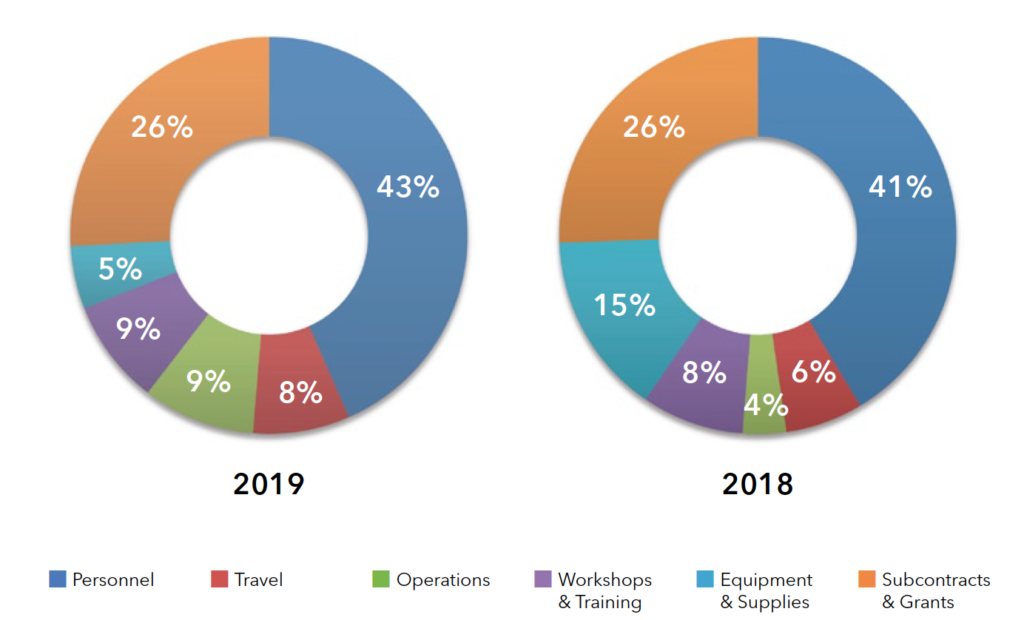
Publication Credits
Contributors, photographers, editors, and more!
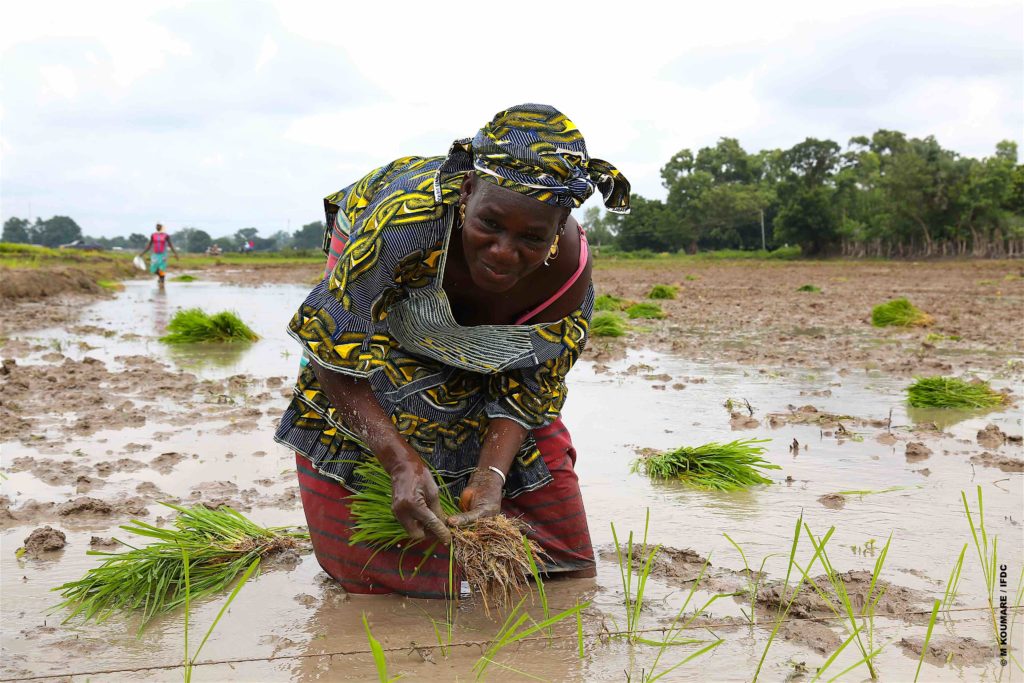
On the Cover: After the death of her husband, 57-year-old Nabintou Ouattara, seemingly all alone, faced a new task: feeding an entire family. Undeterred by poor fortune, she and 65 other women in Kadiolo, Mali, established a rice producers association, Dabakala. These courageous women, once caught in a cycle of poverty and food insecurity, have doubled their rice production with improved fertilizer technology. “We never thought we could grow enough rice to sell, but now we are selling so much we have our own cash. Many of our women are independent. They no longer depend entirely on their husbands,” said Ouattara, humbly beaming.
Executive Editor: Andy Thigpen
Editor: Julie Kohler
Print Graphic Design/Layout: Meg Ross
Online Layout: James Thigpen
Production Consultant: Donna Venable
Contributors: Felix Deyegbe, Julie Kohler, Latha Nagarajan, Egide Nduwayezu, Upendra Singh, Kasta Staggs, Andy Thigpen, James Thigpen, Dan Waterman
Copyright © 2020 by IFDC. All Rights Reserved.
All photographs, unless otherwise noted, are from the IFDC photo archives.


